The 2023 Global Energy Agenda
In 2022, Russia’s invasion of Ukraine undermined the global energy system’s return to pre-COVID-19 normalcy, injecting turmoil and uncertainty into the sector. Russia’s gas cuts led Europe to compensate for the loss of energy supply by reverting to coal and oil, leading the global community to confront deepening tensions between national security, energy security, and climate action.
Read the 2024 Global Energy Agenda
However, the crisis in Europe, despite causing an upsurge in carbon-intensive power, provided the world with fresh impetus to change the trajectory of the energy transition. In response, policymakers worldwide are hastening efforts to decouple their economies from foreign hydrocarbons and to decarbonize energy systems. Ultimately, the war may accelerate longer-term energy trends toward a more sustainable and secure system.
Against this backdrop, energy leaders head into 2023 with a greatly revised outlook from 2022, as revealed in the Atlantic Council’s third edition of the Global Energy Agenda. The publication includes an analysis based on our survey of energy stakeholders, representing a wide variety of professions across the sector from more than fifty countries. Complementing our survey analysis, a diverse group of experts, corporate leaders, and policymakers contributed essays that provide deeper insights on the tumult of 2022 and its implications for reshaping energy systems for the future.
Despite a year defined by complications to the energy transition, there is reason to be optimistic as the global energy community doubles down on in-tandem efforts to achieve climate goals and longer-term energy security for all.
Foreword
The 2023 Global Energy Agenda
Last year in this space, I wrote that the world seemed to be in a holding pattern, as we worked together to exit the pandemic while keeping decarbonization targets within sight. The decarbonization imperative remains, but this year’s challenge is now focused on how new geopolitical threats will shape the energy future, precipitated by Russia’s invasion of Ukraine in February 2022. We can only accomplish the energy transition if we, at the same time, pay renewed attention to energy security.
It may seem expedient to treat Russian aggression as the immediate, near-term threat, while deferring the need for climate action. However, both challenges must be met simultaneously.
Although the energy future remains uncertain, many countries, especially those like Germany and Italy that were deeply dependent on Russian energy supplies, have started to chart a new path toward energy security through clean energy sources and more reliable and resilient supply chains. Even as we recognize the need for reliable and affordable energy, it was encouraging at COP27 to see the world come together once again to reiterate commitments to a sustainable and equitable energy transition.
In its third edition, the Global Energy Agenda has again taken the pulse of the global energy policy community, including contributions from leaders in governments, the private sector, and expert communities.
This year, their survey responses revealed new insights into the connections between geopolitics and energy security, the balance between the energy transition and fossil fuels, and challenges and opportunities along the path to net-zero. Respondents tended to vote together as blocs based on their geographic locations, their industries within the energy sector, and their views on the speed at which the energy transition will occur.
We noticed a few major changes between last year’s Global Energy Agenda survey and this year’s. Most interestingly, but not surprising, nearly half (47 percent) of respondents now believe that the greatest geopolitical risk is posed by conflict with a major energy producer, in contrast to last year, in which respondents were far more divided on their assessment of geopolitical risk with only 26 percent choosing a major cyberattack as the great risk.
There was also cautious optimism among respondents in their views of the likelihood of achieving net-zero by 2050. This year, 45 percent believe it likely that the world will attain net-zero by 2050, with 55 percent disagreeing. Although the hopeful still constitute a minority, their numbers are up from 27 percent last year. Meanwhile, a slight majority of 51 percent think that reaching net-zero would have at most a limited negative effect on GDP, or even a positive one.
The essays in this publication give voice to diverse perspectives. Coming from different segments of the global energy landscape, the authors naturally put forth divergent views on the future of their sector. But if there is a common thread among them, it is that now is the time to leverage today’s energy crisis for faster progress.
As Winston Churchill said while working to form the United Nations after World War II, “Never let a good crisis go to waste.”
In last year’s Global Energy Agenda, I wrote that “the course that we chart to net-zero must be steady but also ambitious enough to meet the challenge.” And after Davos last year, I wrote that I am going “short” on pessimism and “long” on optimism.
I think that’s the right note to hit in a year that will culminate with COP28. hosted by the United Arab Emirates, which will be colored by attainable, pragmatic solutions to achieve the inclusive and sustainable energy outcomes the world so urgently needs.
Frederick Kempe is the President and Chief Executive Officer of the Atlantic Council.
Introduction
In 2022, as the world was learning to cope with COVID-19 and its deadly toll, Russia’s invasion of Ukraine shattered hopes in the West for a return to normalcy. Over the course of the year, the unprovoked attack and Russia’s weaponization of natural gas rapidly reshaped interdependent energy systems around the world.
Although the humanitarian devastation and mass casualties caused by the war—including the displacement of millions of Ukrainians—have radically surpassed the economic and political challenges imposed on the global energy system, the ongoing energy crisis has and will continue to have far-reaching consequences.
With energy prices retreating from multiyear highs, an apparent calm has settled on the broader market outlook. On the horizon, however, stirs a more complicated future, as the energy crisis complicates the probability of a smooth transition.
Around the world, volatility from higher energy and food prices is further shrinking household budgets already stretched thin, forcing many people to choose between heating their homes and feeding their families. The International Energy Agency’s (IEA) 2022 World Energy Outlook estimates that seventy-five million people who have recently gained access to clean energy are likely to lose the ability to pay for extended electricity services, and a hundred million may no longer be able to afford clean cooking solutions.1International Energy Agency (IEA), World Energy Outlook 2022, Revised Version, 2022, https://www.iea.org/reports/world-energy-outlook-2022. Price and economic pressures associated with today’s energy crisis mean that “the number of people without access to modern energy is rising for the first time in decades.”2Laura Cozzi et al., “For the First Time in Decades, the Number of People without Access to Electricity Is Set to Increase in 2022,” Commentary, IEA, November 3, 2022, https://www.iea.org/commentaries/for-the-first-time-in-decades-the-number-of-people-without-access-to-electricity-is-set-to-increase-in-2022.
Beyond these immediate impacts, the severe constriction of Russian natural gas flow to Europe has raised the question of the war’s long-term effects on the global energy transition and the overall fight against climate change. To make up for the void left by the near shutoff of Russian gas supplies, Europe has turned to the use of carbon-intensive coal and oil to generate electricity, a response criticized by some climate advocates as shortsighted in the face of worsening droughts, extreme heat, rising oceans, and other effects of planetary warming. The current surge in carbon-intensive fossil energy use, however, appears transitory. Laying bare just how tightly interconnected national security is to energy security, policies advanced in Washington and Brussels are emblematic of the urgency with which lawmakers are seeking to decouple their economies from reliance on foreign oil and gas imports. If anything, the war has heightened the urgency around accelerating low-carbon energy deployment as a critical tool for shoring up countries’ energy security.
The European Union’s RePowerEU strategy is expressly designed to make the continent “independent from Russian fossil fuels well before 2030” by empowering a clean energy economy anchored in deployment of renewable energy and energy efficiency.3“REPowerEU: Joint European Action for More Affordable, Secure and Sustainable Energy,” European Commission, Press Release, March 8, 2022, https://ec.europa.eu/commission/presscorner/detail/en/ip_22_1511. This comes in addition to the EU’s continued progress on its Fit for 55 plan to reduce emissions by 55 percent by 2030 compared to 2005 levels. The United States, meanwhile, is working to rapidly implement the nation’s most significant piece of climate legislation, the Inflation Reduction Act, which aims to reduce the country’s carbon emissions by 40 percent by 2030 compared to 2005 levels. As with all major legislation, the law has its detractors, but Congress’s incentive-laden approach, with its ample support for consumers and corporations, likely means the statute has staying power. And considering the United States’ status as the world’s largest economy, Washington’s massive investment in clean energy and corresponding supply chains will reverberate globally.
The 2023 Global Energy Agenda survey and expert perspectives
Given this context, it is unsurprising that energy leaders head into 2023 with a completely different outlook than a year prior. To gain insights into their thinking, the Atlantic Council conducted its third annual survey for its 2023 Global Energy Agenda. The survey was conducted from October 14 to November 23, a window that overlapped with the 2022 United Nations Climate Change Conference, widely known as COP27. This report distills the survey responses, drawing on the insights of energy stakeholders from more than fifty countries, and representing a variety of fields associated with the sector. An appendix provides additional demographic details. As with last year’s survey, the 2023 Global Energy Agenda continues a tradition of employing various questions and insights from prior years’ results and analyses to help hone key findings.
To complement our survey analysis, the Atlantic Council Global Energy Center invited global experts, corporate leaders, and government officials to con- tribute essays for this Global Energy Agenda to provide deeper insights into issues facing the energy sector and the world’s prospects for the energy transition. Our contributors span the globe and represent a diverse array of perspectives from energy leaders. The essays cover topics ranging from critical mineral supplies to advanced nuclear power to climate diplomacy, and altogether set the energy agenda for the year ahead as the world looks for a meaningful commitment to climate action on the road to COP28.
In this year’s edition, our analysis draws distinctions where significant differences existed between groups based on respondents’ geographic region; which industry they work in within the energy sector (oil and gas, nuclear power, renewables, etc.); and their views on when the world will reach peak oil demand. The latter group is further subdivided to provide key insights into those who see an accelerated energy transition (“energy transition bulls”) and those who predict a more enduring role for oil and gas in the global energy mix (“energy transition bears”). These categories tend to vote together as blocs in their responses throughout the survey.
Collectively, the survey results and expert essays that compose the 2023 Global Energy Agenda have yielded the following key insights.
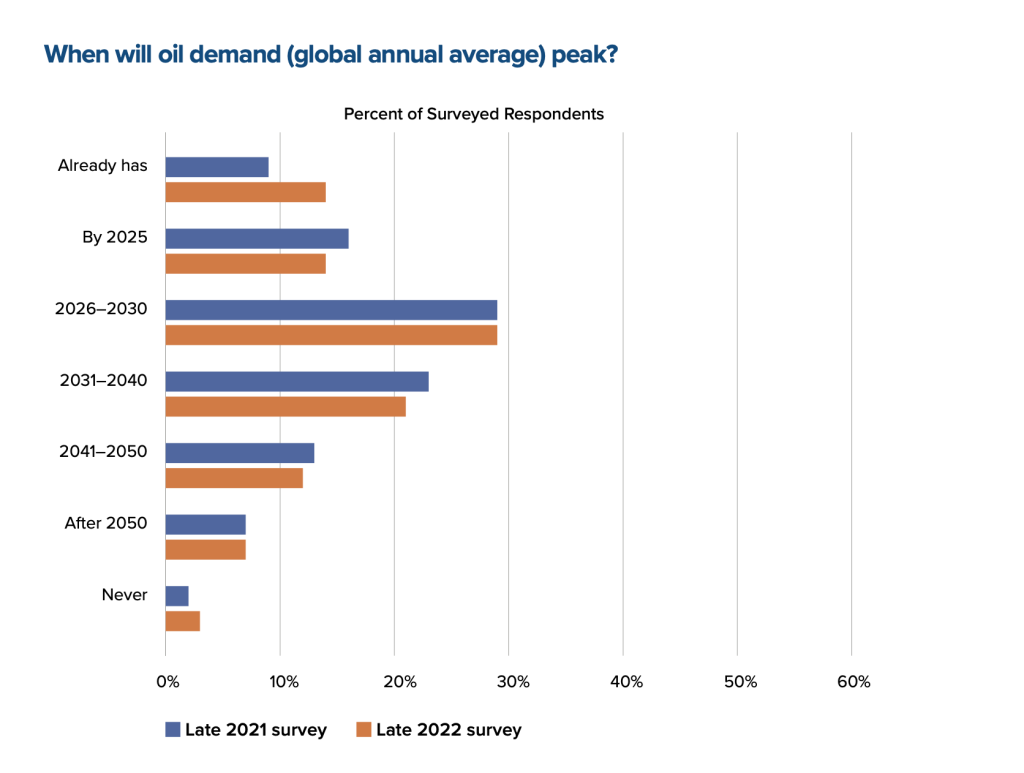
The crisis in Europe is dusting off the playbook for geopolitics and energy
Russia’s war in Ukraine has recalibrated the contemporary wisdom on geopolitical risk that existed just a year ago. In the fall 2021 survey, which was conducted only a few months before Russia’s February 2022 invasion, the most frequently mentioned geopolitical risk facing the energy sector was a major cyberattack; however, at only about a quarter of respondents, there was no strong consensus. Additionally, a conflict including a major energy producer was at the top of the risk list for only 17 percent of respondents, despite mounting concerns in Western security circles at the time the survey was taken that Russia was preparing for an armed incursion into Ukraine.
Naturally, in our fall 2022 survey, nearly half of respondents say that the Russia-Ukraine war is the top risk. Representing one-tenth of global oil and gas supply in 2020, Russia has historically served as a meaningful contributor to global energy trade, making it impossible to divorce the Kremlin’s decision to invade Ukraine from the stability of global energy markets, especially in a moment of increased fragility in the wake of the pandemic. The consequences of this political gamesmanship on energy policy and trade are on par with the 1973 Arab oil embargo and 1979 oil crisis. The marked effect on energy prices, however, is expected to be temporary, according to survey respondents: a notable contingent sees oil demand ebbing in the next decade. This expectation is perhaps an indicator as to why just 23 percent believe that geopolitical leverage will be the primary cause of price volatility come 2030.
Midcentury net-zero optimism is on the rise
There is little consensus on the means of achieving net-zero emissions by 2050, but the number of respondents that see the world meeting its zero-emission aims by midcentury is rapidly growing. Although still in the minority, the percentage of survey respondents that believe net zero is within reach in the next thirty years has spiked to 45 percent, a sizable increase from only 27 percent of participants predicting this outcome one year ago. In recent years, the concept of a net-zero energy system has unquestionably gained traction in political and industry circles around the world. Even dedicated oil-producing countries such as the United Arab Emirates and Saudi Arabia have set net-zero benchmarks—2050 and 2060, respectively—with the Kingdom closely associating net-zero goals with its aims of promoting key domestic policies such as the circular carbon economy framework. Interestingly, however, optimism for a net-zero future is most subdued among those working in zero-carbon sectors (i.e., renewables, nuclear, and advanced energy technologies), with 73 percent responding that it is “unlikely” that the world will reach net-zero by 2050, higher than those in oil and gas (62 percent).
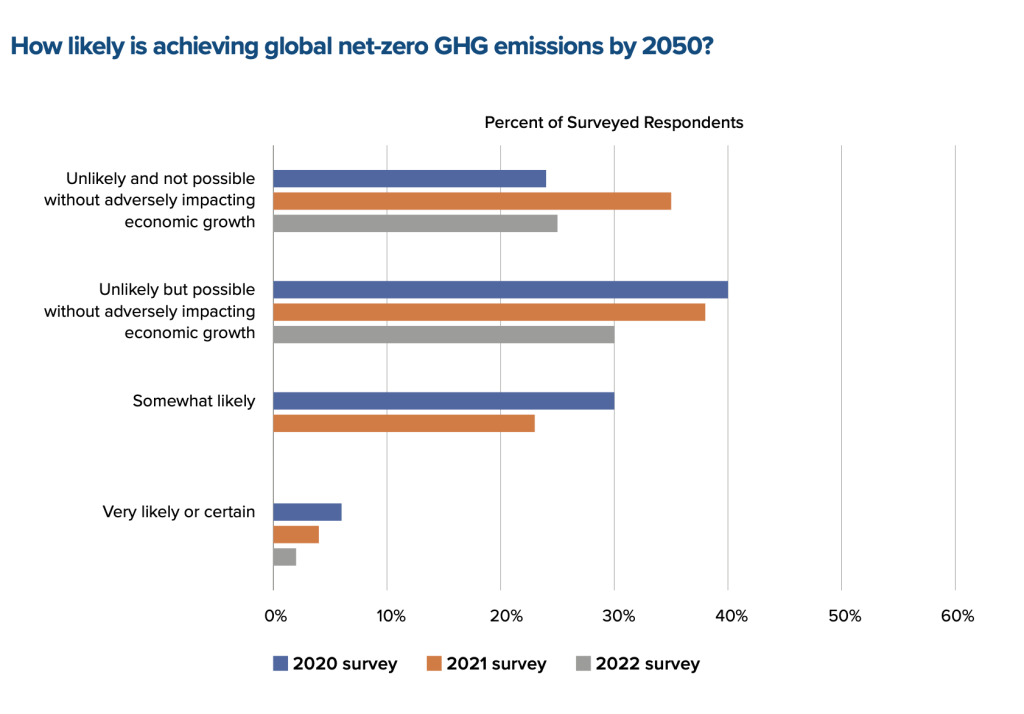
Global North-South divide on achieving the clean energy transition
While political will is widely recognized as the predominant obstacle to reaching net-zero emissions among those surveyed, the cost of clean energy and access to capital meaningfully weighs on those outside of the North American and European continents. A number of respondents from emerging markets, for example, view insufficient resources as another major factor hindering progress. This is consistent with perspectives on the overall energy transition as well, where Europeans and Americans see broad macroeconomic trends, such as recession risk or inflation, as the principal headwinds, while those in developing countries more frequently cite a lack of government investment. These perspectives underscore a growing debate within the United Nations Framework Convention on Climate Change (UNFCCC). During COP27 in Sharm el Sheikh, Egypt, the Global South found success in drawing a renewed focus on how climate change is impacting developing nations, ultimately enabling the introduction of “loss and damage” into a formal negotiation process. Efforts to address inequities in financing billions of dollars in clean energy infrastructure, which will be necessary to avoid the worst impacts of climate change, will remain in focus during COP28.
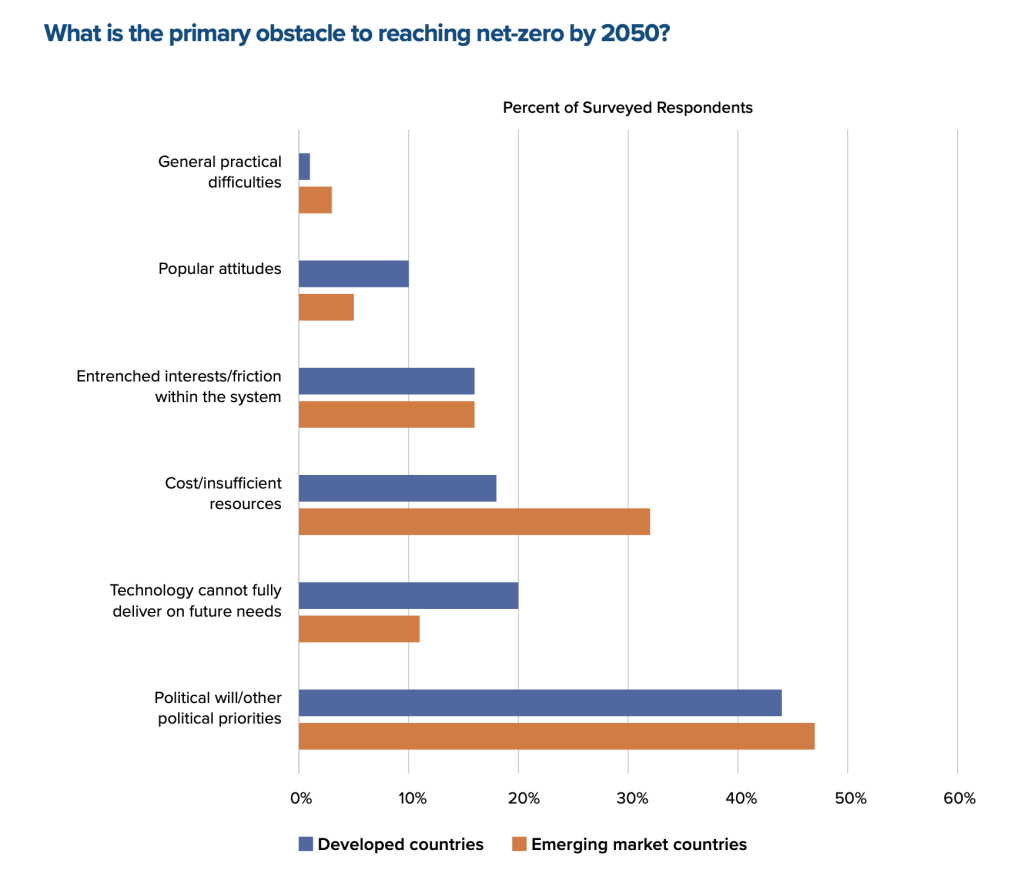
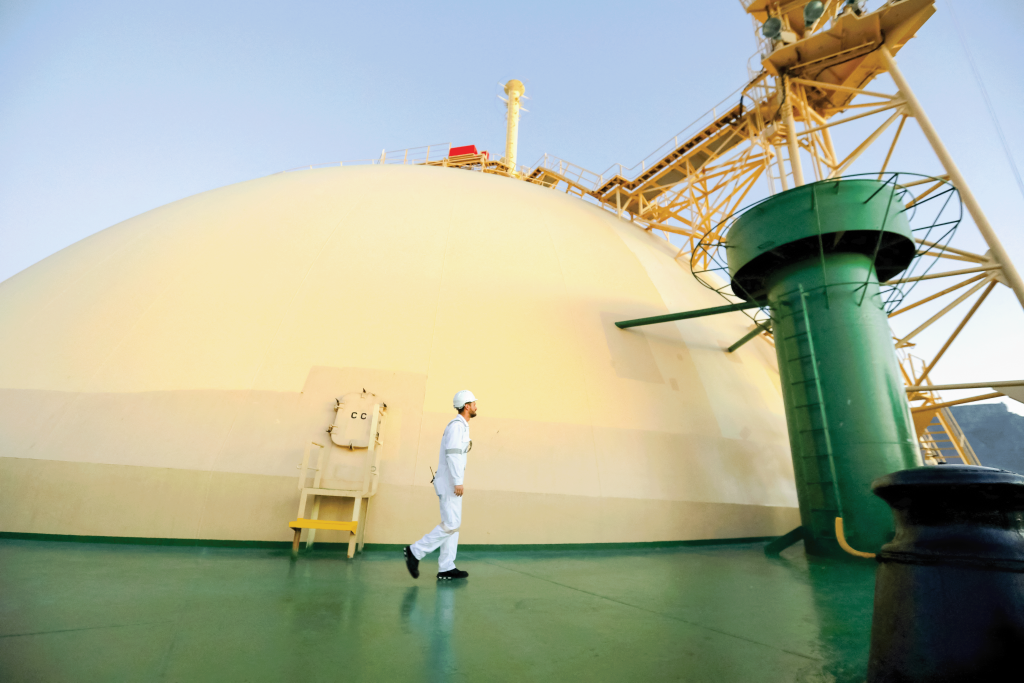
Natural gas’ appeal is ebbing in its most substantial near-term market
The roughly even division between those who see a long-term future for natural gas and those predicting a limited one remains consistent year-on-year, but with greater geographic variations. Of those surveyed, the majority see natural gas remaining a dominant—if not predominant—feature of the global energy mix. The vast majority of those remaining (40 percent of the total), think that natural gas will act as a long-term bridge fuel before disappearing. Only 3 percent see a minimal role for gas. While broadly consistent with last year’s analysis, Europeans—likely influenced by Russia’s weaponization of the resource—are increasingly resolute to wean their market from natural gas: now 49 percent say that the fuel will have a permanent role, down from 58 percent last year. Meanwhile, in the Middle East and North Africa—and, to a lesser extent, the United States—the anticipation that natural gas will remain a permanent fixture of the energy mix is growing, up to 40 percent from just 30 percent the prior year.
Taken together, we hope 2023 Global Energy Agenda survey responses, analysis, and essays will lay out the contours of the current energy system, assess the events and trends that will shape the energy system in 2023, inform fact-based debate and analysis about the best path forward, and set the shared energy agenda for the year.
Chapter 1: Geopolitics and energy security
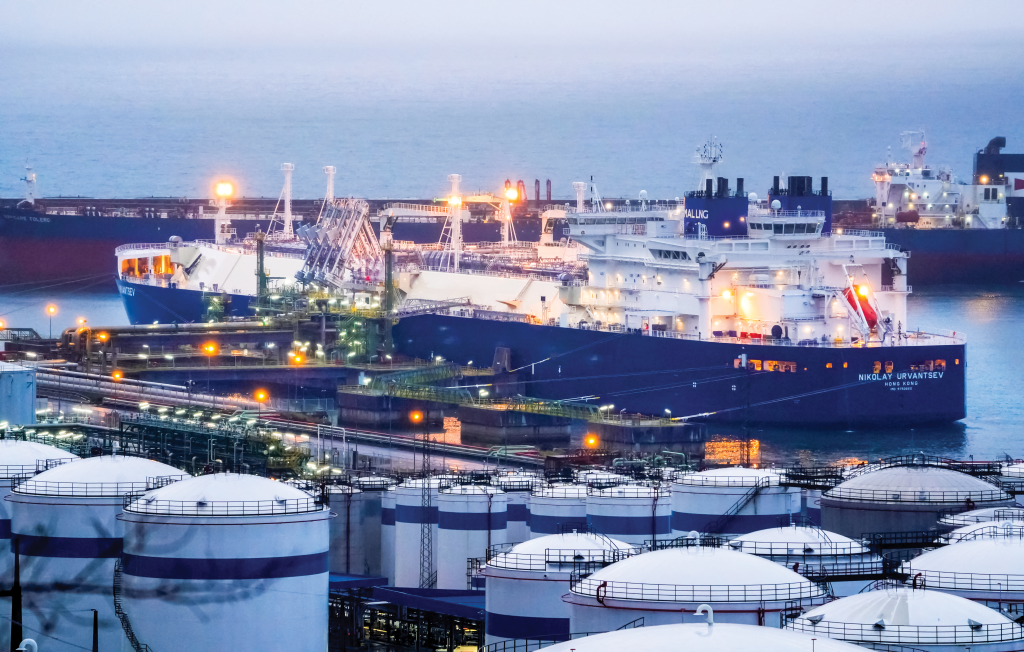
Essays
Why today’s global energy crisis promises to be a turning point toward a cleaner and more secure future
By Fatih Birol
Post-war outlook on Russia as an energy power
By John E. Herbst
The geopolitics of energy
By Richard L. Morningstar
A precarious phase of war and Russian energy leverage
by Helima Croft
Nuclear energy is vital to ensuring energy security and an affordable, sustainable, and resilient energy system now and for the future
By Sama Bilbao y León
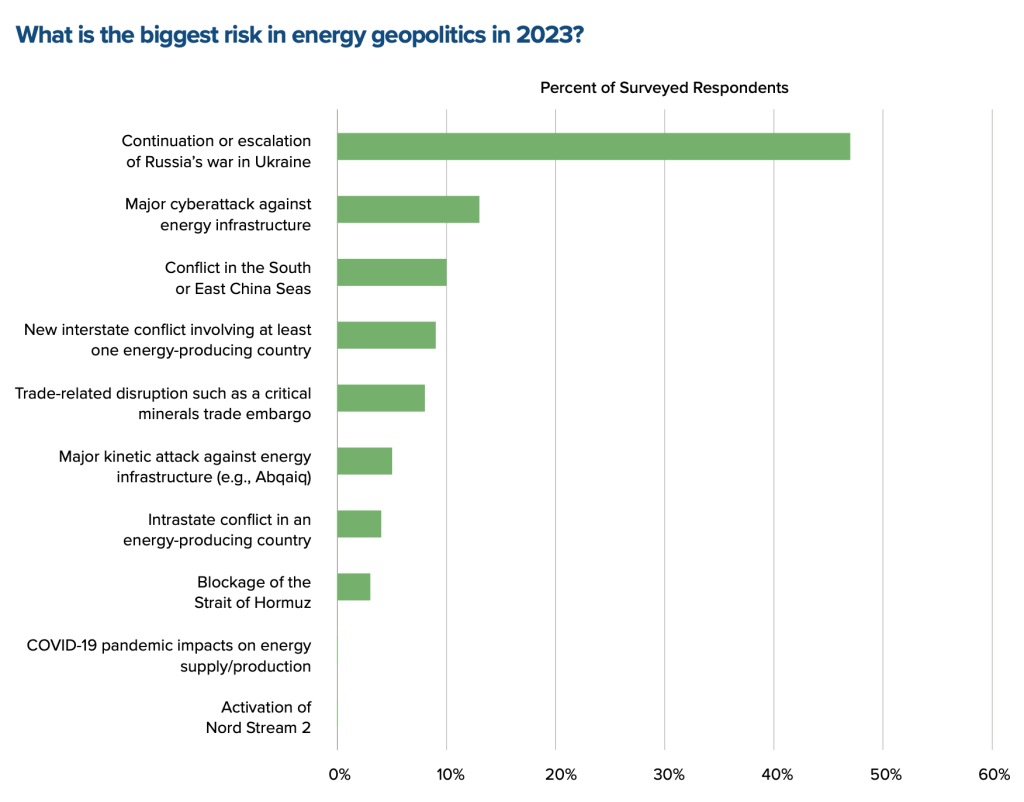
Russia’s invasion of Ukraine last February dramatically transformed political risk perceptions within the energy sector in 2022, surmounting even the most pressing global challenges from recent years, including the pandemic. Of course, current events often weigh heavily on public perception.
When the 2022 Global Energy Agenda survey was conducted in late 2021, the cyberattack on the Colonial Pipeline—which crippled fuel supply along much of the East Coast of the United States—had occurred recently and was front-of-mind for many respondents, while the specter of Russian aggression was still a distant-seeming possibility. It was therefore unsurprising that a military conflict was not a top concern among survey participants at the time, while the most frequently cited risk—according to 26 percent of respondents—was a major cyberattack.
Having now witnessed the brutality of Russia’s attack on Ukraine and the subsequent fallout impacting all facets of the global energy system, roughly half of the respondents name the war’s continuation or escalation as the dominant energy risk in geopolitics. Meanwhile, concern over cyberattacks to the energy system dropped by half, from 26 percent to 13 percent. Arguably, this decline is more of a testament to the enormous magnitude of the war’s impact on energy geopolitics rather than a diminishment in cyberattack risk.
Compared to the prior year’s response, however, most topics did not see drastic change in the face of Russia’s war. For instance, the percentage of respondents who envision a conflict in the South or East China Seas as the predominant risk rose from 7 percent last year to 10 percent this year. Additionally, trade-related disruptions still command roughly one tenth of respondents as well, shifting from 11 percent to 8 percent. It is worth noting that China and trade watchers represent well-defined communities with long-standing convictions regarding the risks and opportunities in their respective areas of expertise, lending some credence to why these respondents may be comparatively unmoved by the conflict in Ukraine in their assessment of future risks.
Meanwhile, two old worries fell off the radar of energy risks: Nord Stream 2 and COVID-19, after being collectively named by 17 percent of respondents as top concerns for the 2022 outlook. With one of the two Nord Stream 2 strings sabotaged in September 2022, the absence of the pipeline’s ranking this year is self-evident. COVID-19, in contrast, elicits deeper reflection. While generally there appears to be broad societal appreciation that the virus remains a feature of modern life, especially as China experiences a resurgence in infections resulting from the easing of Beijing’s zero-COVID policy, the fact that respondents no longer see the pandemic as a global risk illustrates how accustomed society has grown to the “new normal.”
Overall, other facets of the global geopolitical landscape may simply be outmatched now by Russia’s corrosive foreign policy and the irreparable harm it has brought to the stability of Europe. As the apex risk of 2022, it is worth diving deeper into how enduring Russia’s role will be in the European ecosystem and, by proximity, in the stability of the transatlantic partnership. Given the established history of energy trade between Russia as an exporter and European countries as consumers, understanding the perspective of survey respondents provides a glimpse into how the energy community sees Europe’s relationship with Moscow adjusting in coming years.
Even before February 2022, Russia had reduced energy exports to European customers in a presumed effort to exert political leverage. When the invasion started, sales contracted further and in response, European countries enacted a series of policies to reduce Russian oil and gas revenues. This includes the December 5, 2022, EU ban on Russian crude imports, a Group of Seven (G7) price cap on Russian seaborne exports, and a pending EU ban on Russian petroleum products, which is slated to go into effect on February 5, 2023. And while higher global prices enabled Russia to continue earning revenue from fossil fuel trading with European countries in 2022, the drop in European market share is significant. In 2021, Russia provided 40 percent of non-EU gas imports to the EU; by the fall of 2022, Russia’s share of EU imports had fallen to 7.5 percent.4“New Reports Highlight 2nd Quarter Impact of Gas Supply Cuts,” European Commission, October 17, 2022, https://ec.europa.eu/info/news/drop-gas-consumption-and-increase-renewable-energy-generation-q2-2022-2022-oct-14_en. In the first half of 2022, Russian oil imports to the EU also declined.5Eurostat, “EU Imports of Energy Products–Recent Developments,” September 2022, https://ec.europa.eu/eurostat/statistics-explained/index.php?title=EU_ imports_of_energy_products_-_recent_developments#Main_suppliers_of_natural_gas_and_petroleum_oils_to_the_EU.
If survey respondents are right, the initial disruption to these markets will last through the end of this decade. The majority of respondents say that Russian exports to Europe of oil (58 percent of respondents) and gas (55 percent of respondents) will decrease substantially by 2030. Europe-based respondents are even more likely to forecast reduced fossil fuel imports from Russia. The horrors inflicted on Ukraine have forced a seismic shift in thinking about the costs—financial, social, and geopolitical—of energy security. There is less consensus, however, on how these events will shape the global energy transition. While respondents resoundingly agree that the war in Ukraine and Europe’s anticipated pivot away from Russia will have an impact on climate action, there is an equally stark divide on whether it is a headwind or tailwind for a zero-emissions future. Nearly 60 percent say it will accelerate the energy transition, while 40 percent say the war will impede it.
There are merits to both perspectives, of course, which are explored in more detail by our essay authors in this chapter. The war has highlighted the need for greater energy security, which could lead to increased investment in indigenous clean energy resources. However, the development of capacity from renewables and nuclear energy will take time, and the need to replace Russian gas is likely to lead to a boost to conventional energy resources in the face of few immediate alternatives for European importers, not to mention the corresponding implications for emerging markets that cannot financially compete with Europe for supply.
Leadership insight
Why today’s global energy crisis promises to be a turning point toward a cleaner and more secure future
By Fatih Birol
Russia’s invasion of Ukraine in February has thrown energy markets into turmoil, setting off the first truly global energy crisis, with impacts that will be felt for years to come. International trading routes and investment flows that had built up over decades are being profoundly reshaped. Households, businesses, and entire economies are struggling to pay for food and energy, leading to rising poverty and insecurity. Geopolitical risks are on the rise.
Despite these major difficulties, I’m optimistic about the long-term effects of the current crisis on the global energy sector. Thanks to the policy responses by many governments around the world, the crisis is set to accelerate our transition to an energy system that is not only cleaner, but more affordable and secure.
In our recent World Energy Outlook 2022, the International Energy Agency’s (IEA) analysis shows that for the first time ever, today’s prevailing government policies will result in a distinct peak in global demand for fossil fuels in the coming years as clean energy technologies expand. In this scenario, coal’s recent crisis-driven rebound is temporary, and its use falls back within the next few years; natural gas demand reaches a plateau by the end of the decade; and rising sales of electric vehicles mean that oil demand levels off in the mid-2030s before ebbing slightly to midcentury. This is nothing short of historic. Ever since the start of the Industrial Revolution in the 18th century, fossil fuel use and economic growth have risen in tandem. Now, they are parting ways. However, the transition to clean energy is not yet happening quickly enough to avoid severe impacts from climate change.
What we do see is increasing ambition and action around the world to accelerate the transition. While a lot of public attention has focused on the short-term measures many governments have taken to shield consumers and businesses from higher energy prices, many of those same governments are also taking longer-term steps to address the underlying fragilities of our energy systems.
The most notable responses include the US Inflation Reduction Act, the European Union’s Fit for 55 package and REPowerEU plan, Japan’s Green Transformation (GX) program, South Korea’s aim to increase the share of nuclear and renewables in its energy mix, and ambitious clean energy targets in China and India. The Inflation Reduction Act alone puts close to $400 billion on the table in the form of tax incentives, subsidies, and support for technologies ranging from hydrogen to solar to carbon capture—and this will mobilize far more in private sector investment. Taken together, these new measures by governments worldwide are set to help propel global clean energy investment to more than $2 trillion a year by 2030, a rise of more than 50 percent from today.
How has the current crisis accelerated these moves? With the droughts and floods we’ve witnessed in recent years highlighting the growing impacts of climate change, the environmental case for clean energy needed no reinforcement. But today’s soaring energy prices have made the economic arguments in favor of cost-competitive and affordable clean technologies stronger than ever. Now, with the war in Ukraine, the energy security case for clean energy has come to the fore, with countries recognizing the risks of relying too heavily on imported fossil fuels.
This alignment of economic, climate, and security priorities is moving the dial toward a better outcome for the world’s people and for the planet. If all countries achieve their current national climate pledges on time and in full, IEA analysis shows that it would limit the rise in global average temperatures to 1.7 degrees Celsius. The increasingly robust clean energy plans we’re seeing provide grounds for optimism that countries can move closer to delivering the concrete policies and implementation needed to make these ambitious pledges a reality. However, there still remains an “implementation gap” between today’s policy settings—which would most likely lead to a temperature rise of around 2.5 degrees Celsius, far too high to avoid severe climate risks—and what’s needed to achieve national climate pledges.
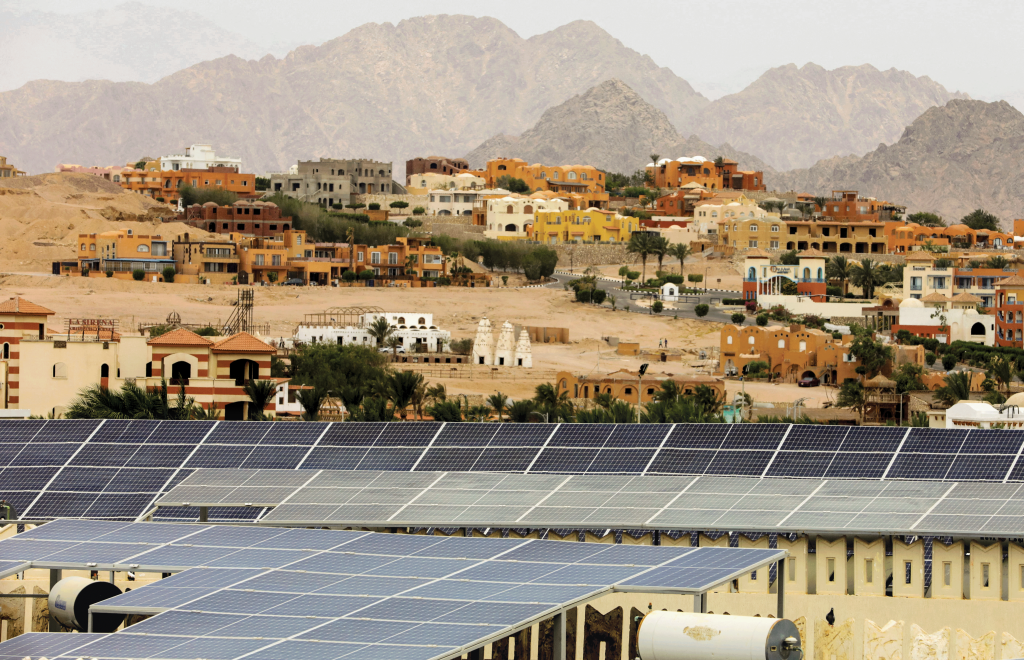
And we need even greater ambition and stronger implementation to reach net zero globally by 2050 and have a chance of stabilizing the temperature rise at around 1.5 degrees Celsius. This would require doubling global clean energy investments from the current projected level to around $4 trillion a year by 2030.
We can accomplish this faster progress if strong action is taken immediately. Investments in clean electricity and electrification, along with an expanded and modernized grid, offer clear and cost-effective opportunities to cut emissions more rapidly while bringing down electricity costs. Maintaining today’s growth rates for deployment of solar PV, wind, electric vehicles, and batteries requires supportive policies not just in the early leading markets for these technologies but across the world.
A major concern that demands urgent attention is the uneven distribution of clean energy investment around the world. If China is excluded, then the amount being invested in clean energy each year in emerging and developing economies has remained flat since the Paris Agreement in 2015.The cost of capital for a solar PV plant in 2021 in key emerging economies is between two and three times higher than in advanced economies. Today’s rising borrowing costs risk further exacerbating this divide.
International efforts, especially from multilateral development banks, are needed to step up climate finance in developing and emerging markets, and to tackle the perceived risks that deter investors. There is immense value in broad national transition strategies such as Just Energy Transition Partnerships, like the one announced by Indonesia and a group of leading economies at the G20 Summit in November, that integrate international support and ambitious national policy actions, while also providing safeguards for energy security and the social consequences of change.
What is undeniable is that energy markets and policies are changing dramatically before our eyes as a result of the war in Ukraine. And these aren’t just short-term blips, but changes that will play out for decades to come. I am convinced that when we look back, we will see 2022 as a historic turning point towards a cleaner, more secure, and more affordable energy system.
Fatih Birol is the executive director of the International Energy Agency.
Leadership insight
Post-war outlook on Russia as an energy power
By John E. Herbst
In the winter of 2005-2006, one year after the Orange Revolution, Moscow shut off the gas to Ukraine in an effort to punish Ukraine for rejecting Putin’s candidate for president, Viktor Yanukovych. Ultimately, Russia’s actions successfully coerced newly elected President Victor Yushchenko to accept a corrupt deal for the delivery of gas in the future. That did little to inhibit Moscow from shutting off the gas to Ukraine a second time in 2009.
As ambassador to Ukraine in 2005, I had warned of these very scenarios, sending formal messages back to Washington regarding the legitimacy of Moscow’s hints of shutting off gas supplies to Europe. Yet, European energy dependence on Moscow only grew after gas cutoffs to Ukraine, starting with the gas pipeline Nord Stream 1, which stretches from Russian to Germany and became operational in 2011.
Even after Moscow seized Crimea and began its hybrid war in eastern Ukraine, German Chancellor Angela Merkel in 2015 increased this dependence by signing a deal to construct another gas pipeline—Nord Stream 2—to bring more Russian gas to Germany. Plans to certify and put into operation this controversial pipeline proceeded throughout 2021, despite clear Russian manipulation of gas supply for political gain and its military buildup on Ukraine’s border in preparation for the massive invasion of February 2022.6Hans Von Der Burchard, “EU’s Borrell Fires Back at Putin by Saying Gas Price Surge is Political,” Politico, October 18, 2021, https://www.politico.eu/ article/eu-josep-borrell-putin-gas-price-surge-political/. Only Moscow’s “annexation” of Ukraine’s occupied Luhansk and Donetsk Oblasts and then the invasion definitively stopped Nord Stream 2. The pipelines were ultimately sabotaged in September 2022.
All of this is a reminder that in the normal scheme of things, political economy trumps economics. Nearly forty years of growing European dependence on Russian hydrocarbons began with the opening of the Urengoi-Pomary-Uzhgorod pipeline in 1984. The economics of this growing dependence was obvious. Russia had major supplies, it was relatively nearby, and Russian hydrocarbons could be delivered by pipeline. While the early 1980s were still characterized by tense East-West relations, Gorbachev became the Soviet First Secretary in 1985; those relations warmed quickly; and six years later the Soviet Union collapsed. In the 1990s, a principal goal of the United States and its allies was to bring Russia fully into the international community, including membership in the International Monetary Fund (1992); the Group of Seven (G7), which became the G8 (1998); and the World Trade Organization (2012). In short, the clear improvement of political relations provided the right framework for closer economic ties.
This background is essential for considering what Russia’s role will be in world energy markets after its war of aggression against Ukraine ends. The answer to that question begins by asking how the war will conclude. This article is based on the presumption that US and Western aid either continues and even increases, in which case Ukraine will succeed in driving Russian forces out of all, or most, of its territory and negotiating a stable peace, even if some key questions, such as the status of Crimea, are left for future resolution. The second question is what sort of Russia emerges from this defeat. If it is a Russia seething with resentment—of the kind that characterizes major Russian media today—then the prospect of improved relations and growing economic ties is minute. The West would have to treat that Russia with great caution. But if it is a Russia recognizing that the invasion of Ukraine was illegitimate; that imperial polices to dominate its neighbors are a dispensable relic; and that Russia can only prosper if it empowers its people and seeks, in the twenty-year-old words of Russian analyst Dmitri Trenin, to become a normal country truly integrated into the international system, the circumstances will be very different.7Dimitri Trenin, The End of Eurasia: Russia on the Border Between Geopolitics and Globalization, (Washington: Carnegie Endowment for International Peace, 2001).
Before Moscow’s February invasion, the EU received approximately 40 percent of its gas sup- plies (plus more than 50 percent of its gas imports) and 25 percent of its oil from Russia.8Stefan Ellerbeck, “What Progress is the EU Making on Ending its Reliance on Russian Energy?” World Economic Forum, June 29, 2022, https://www.weforum.org/agenda/2022/06/russia-eu-energy-imports/. By October, approximately 9 percent of gas consumed in Europe (and 18 percent of gas imports) came from Russia, including gas going to Turkey and other non-EU members in the Balkans.9“Infographic – Where Does the EU’s Gas Come From?” European Council, updated November 7, 2022, https://www.consilium.europa.eu/en/infographics/eu-gas-supply/. Oil dependence also dropped in the fall of 2022 to 14.4 percent from over 24 percent in the previous year.10“EU Imports of Energy Products – Recent Developments,” Eurostat, December 2022, https://ec.europa.eu/eurostat/statistics-explained/index.php?title=EU_imports_of_energy_products_-_recent_developments#:~:text=The%20share%20of%20petroleum%20oils,higher%20prices%20of%20these%20commodities
Moscow’s oil future is also clouded by its declining reserves, which were 7 percent lower in 2020 than in 1991, and Russia’s Finance Ministry is projecting that 2023 production will drop by 7 to 8 percent.11Li-Chen Sim, “Russia vs Europe: Who Is Winning the Energy War?” Russia Matters, November 23, 2022, https://www.russiamatters.org/analysis/russia-vs-europe-who-winning-energy-war Moscow’s ability to maintain its natural gas system and to find new supplies of oil and gas are also being hindered by the effective export controls introduced by the West since the February invasion. Russia needs Western technology to access harder-to-reach oil and gas.
In a postwar world, those controls will stay in place if Moscow is still perceived as a potentially aggressive actor. If the Kremlin makes a clear break with its past, those controls will begin to unwind, but, as a precaution, only over time. But they will come off—which will be good for Russian oil and gas production—and at the same time, the West, albeit with a certain degree of caution, will be looking for new economic opportunities with Russia and for ways to promote its reintegration into the global economy.
But Europe’s move to alternate supplies of gas, including decisions to build liquefied natural gas terminals, means that, in the future, Europe will have less need for Russia’s pipeline-supplied gas. Developments here will be determined by economic factors. But Moscow might be able to build on its ongoing energy relationships with countries, like Turkey and non-EU Balkan states, whose oil and gas purchases are not limited by sanctions. It may also do the same with landlocked EU states—Slovakia, Hungary, and the Czech Republic—that have received sanctions exemptions that allow them to purchase Russian oil and gas via pipelines. Similarly, Russia could continue its energy relationship with Bulgaria, which has an EU exemption to purchase Russian oil through 2024.12Genka Shikerova, “Ahead of New Sanctions, Russia’s LUKoil Still Looking for a Loophole in Bulgaria,” Radio Free Europe, Radio Liberty, December 2, 2022, https://www.rferl.org/a/bulgaria-lukoil-european-union-embargo-russia-sanctions-loophole/32158973.html.
Moscow, of course, will be able to market its hydrocarbons to China, India, and other customers, but transaction costs are likely to be higher than they were with Europe. The headwinds facing Russia’s oil and gas industry, even in the more optimistic scenario, are the reasons some observers believe Russia will drop from being a “strategic petrostate” to a “reduced energy power.”13Sim, “Russia vs Europe.”
Ambassador John E. Herbst (ret.) is senior director of the Atlantic Council’s Eurasia Center and the former US ambassador to Ukraine.

Leadership insight
The geopolitics of energy
By Richard L. Morningstar
The world of energy changed on February 24, 2022. Moscow’s gas cutoffs, which aim to divide the West and break support for Ukraine, are the culmination of a strategy that has manufactured an energy crisis in Europe. Few knew then the depraved depths of the Kremlin’s plans. Now it is abundantly clear, as is the continuing importance of energy geopolitics.
The stakes of the great energy game are extremely high. Oil and gas exports provide revenue for the Kremlin to sustain its brutal and prolonged war—now approaching the one-year mark. Russian energy exports also undercut Western efforts to isolate Moscow, as the country pivots to new customers in the developing world. Moreover, the Kremlin’s increasing threats to cut supply could generate fresh chaos within already fragile global energy markets, and empower populist, pro-Russian sympathizers in democratic societies.
Such is the geopolitics of energy, the gray area between markets and power politics. Those in Europe who thought they knew Moscow best believed Russia would be a reliable supplier, because it had a business interest in keeping gas flowing. Economic interdependence—it was thought—would make Russia a normal European country.
But those who knew Moscow better understood the Kremlin has other interests, twisted and irrational as they may be. They understood energy is not just a market. It is power. By supplying low-cost gas to Europe, fueling the continent’s industry, and powering economic growth, Moscow had leverage. The European Union’s dependence on Russia enabled an autocracy to influence European politics and impose energy dysfunction on a democratic union.
Moscow did not maximize the economic benefits of this relationship. That was not the point. The point was to place Russia at the center of Europe’s economy—and therefore, its politics. This inoculated Moscow from the political consequences of its aggressive foreign policy, exemplified by the tepid reaction to the 2014 annexation of Crimea and invasion of the Donbas. Because of Russia’s energy—some thought—Moscow was too important not to have a seat at the table of global politics. Yet, last year may be remembered as the twilight for Russian energy leverage. After accounting for 40 percent of EU gas consumption, by the end of 2022, the continent was getting less than 8 percent of its gas from Moscow. Europe, nevertheless, is getting by. Moscow’s strategy is not working, and its ability to wield energy chaos as a geopolitical weapon is waning. EU aspirations to carry out a green transformation of its economic system have become an economic and security necessity, with the soaring cost of fossil fuels providing pressing incentives to decarbonize.
There is no better catalyst for the energy transition than the weaponization of oil and gas supply. Europe’s climate ambition has been galvanized by the crisis, increasing its 2030 emissions reduction target beyond “Fit for 55.” Europe needs to urgently degasify its industry to stay competitive as production costs become tied to LNG prices. Now, even the highest-hanging fruit for decarbonization, the hard-to-abate sectors, are immediate priorities for the continent.
Europe is determined to move rapidly and never be in a position of energy dependence again. Decoupling its economy from fossil fuel imports, through locally generated clean energy, is the surest way to do so. If Europe is successful in accelerating its green transformation, Russia’s days as an energy superpower will soon be behind it.
A page will have been turned—but not completely. Even as the global energy system transitions to a net-zero economy, the geopolitics of energy are not going away.
The geopolitical might once enjoyed by fossil fuel producers is shifting toward countries that produce clean energy metals and technologies. Russia’s influence over global hydrocarbon systems pales in comparison to China’s command of global critical mineral supply chains. In addition, energy is becoming a high-tech industry. As it does, intellectual property and complex manufacturing capacity will become a key factor in geostrategic energy competition among major powers. Ensuring that this competition is managed productively to combat the shared threat of climate change is the challenge of our time.
As the transition gathers momentum, it is paramount that policymakers heed the lessons offered by the current energy crisis and not allow old dependencies to be replaced by new ones. Diversifying sources and technologies remains the most tried-and-true method for neutralizing energy’s geopolitical power.
The geopolitics of energy are transforming, but they are not going away. Those who ignore this unwavering dynamic of the global energy system do so at their own peril.
Ambassador Richard L. Morningstar (ret.) is the founding chairman of the Atlantic Council Global Energy Center. He has served as the US ambassador to the Republic of Azerbaijan, as US ambassador to the European Union, and as the secretary of state’s special envoy for Eurasian energy.
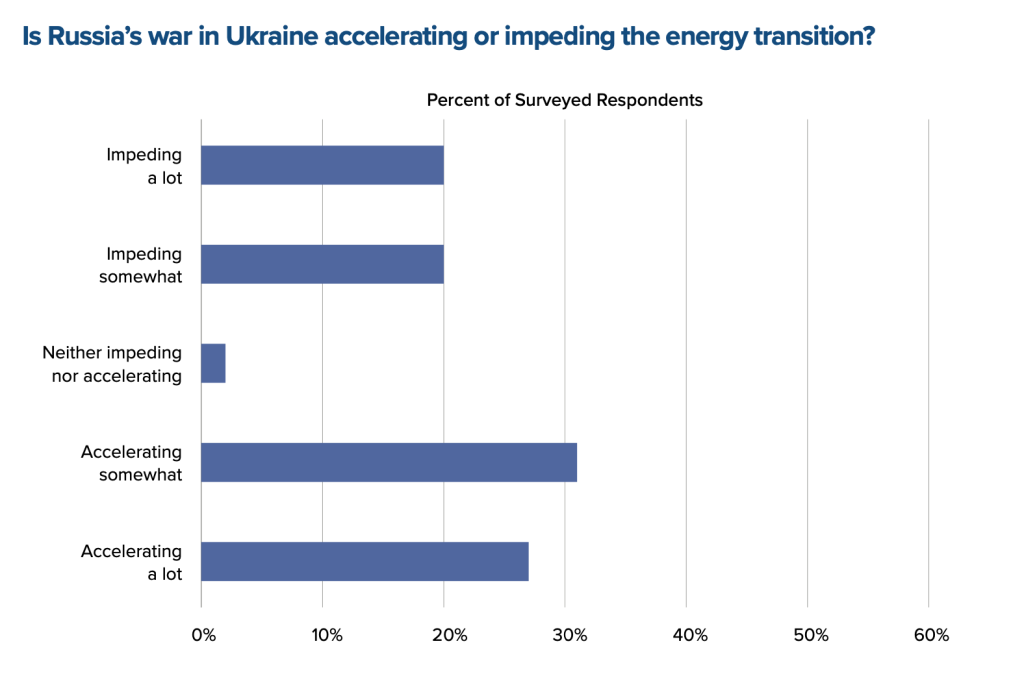
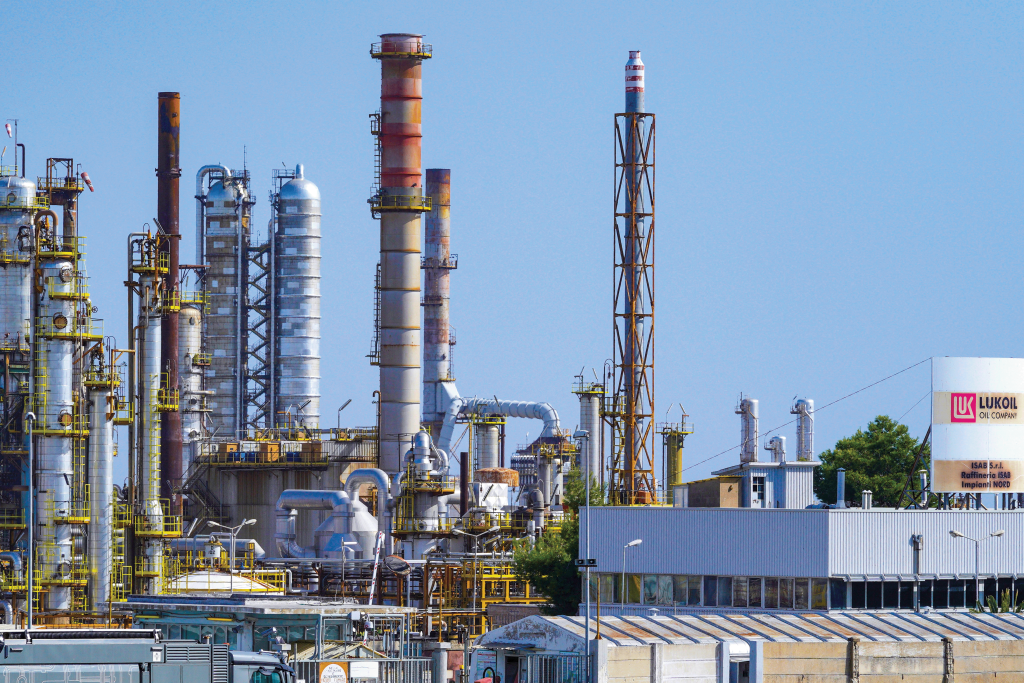
Partner perspective
A precarious phase of war and Russian energy leverage
by Helima Croft
As the war in Ukraine enters its second year, a key question for market participants is whether Russia’s disruptive power is diminishing or whether it still has the capacity to cause significant pain for Western consumers by curtailing energy supplies. Has Moscow already played all of its strong cards by turning off the gas taps to much of Europe and in turn providing the catalyst for countries like Germany to seek new sources of supply and fast-track the buildout of critical liquefied natural gas infrastructure? Does President Vladimir Putin have any real economic option but to continue to sell oil at depressed prices in order to maintain the principal funding stream for his war machine? Or, have energy markets merely entered a fleeting period of calm as the Russian president prepares for another brutal winter campaign—with energy as an essential weapon—to test the resolve of the West to continue providing military and financial support for Kyiv?
From the start of the conflict, Western leaders signaled a clear concern about higher energy prices through sanction carve-outs and long lead timelines for the implementation of coercive measures such as the EU ban on seaborne oil imports. Russia has already made good on its threats to disrupt gas supplies, with piped flows to Europe currently down over 85 percent year-over-year. Gas has long been a weapon of choice for the Kremlin, given Europe’s high dependence on Russian supplies as well as its more modest revenue-generator role. Certainly, the remaining Russian gas flows through Ukraine would seem to be at elevated risk for curtailment, especially given the ongoing aerial bombardment of Ukraine’s energy infrastructure. With storage levels in Europe remaining relatively robust amid warmer weather and new sources of supply, the real challenge for the continent on the gas side could come toward the tail end of 2023 in the next storage-filling season, with no additional Russian volumes likely forthcoming.
Oil is a trickier card for Putin to play because of its centrality to state coffers. The architects of the Group of Seven (G7) price cap plan essentially wagered that Russia would have no option but to keep supplying that market at the $60 price point if it wanted to continue with the war effort. And yet, Putin at least continues to mount a rhetorical resistance to the price cap, pledging to cut supplies to any customer that participates in the plan from February onwards. India will likely be a key test case of Russian resolve to see this pledge through, as the country has emerged as the principal purchaser of distressed Urals barrels no longer welcome in the West. While Prime Minister Narendra Modi and Petroleum Minister Hardeep Singh Puri have publicly voiced opposition to the G7 plan, its refiners are still largely dependent on Western service providers to obtain their cargoes. Early indications are that these customers are continuing to avail themselves of Western services and therefore are presumably signing the requisite attestation that they were purchasing the barrels at or below the $60 cap.
There is certainly scope for Russia to engage in some symbolic export suspensions in order to create doubt about the viability of the G7 effort and attempt to drive oil prices higher. Unlike with gas, however, we think that Russian leadership will be much more strategic with their oil curtailments given the clear revenue imperative. Deputy Prime Minister Alexander Novak’s comments about a 5-7 percent reduction seemingly signals that supply restrictions will be deployed more like a scalpel than a blunt instrument. Moreover, a scenario could arise where the Kremlin seeks to rebrand disruptions due to compliance challenges and service provider problems as a deliberate policy choice. At the time of writing, we estimate that seaborne exports have fallen over 20 percent month-over-month in December, with lost flows primarily coming from Urals and East Siberia Pacific Ocean grades.
A crucial test for markets will come after the February 5 EU ban on the importation of Russian refined products. We have consistently maintained that the products ban will be more difficult to mitigate than the seaborne oil embargo. Asia has been the key release valve for crude, with India taking over 900,000 barrels per day more compared to historical levels. Even then, both China and India have seen month-over-month decreases in crude volumes last month following the embargo. There is no India market equivalent for seaborne diesel shipments, so a mass switch in crude supply like the one we saw with Asian refiners following the invasion is less likely. Moreover, replacing displaced product imports in Europe will also be more difficult given tight product markets; 500,000 barrels per day of diesel imports were still coming from Russia into the EU in October.
Another concerning scenario would be for Russia to disrupt oil supplies from other producers through sabotage or interference in internal affairs. There have already been a number of suspicious Caspian Pipeline Consortium (CPC) pipeline outages. In March 2022, loadings of Kazakh crude from the CPC were suspended at the Russian port of Novorossiysk, with Russian officials citing weather-related damage to loading berths as the cause for the weeks-long outages. However, senior energy officials from other governments have suggested that Moscow may have had an active hand in the CPC outage as part of a test run of its asymmetric disruptive capabilities. Hence, we would put CPC flows close to the top of a 2023 risk list.
Similarly, leading security experts contend that Russia has the ability to disrupt supplies from countries where the Federal Security Service (FSB) and Kremlin-linked mercenary groups maintain a significant presence, such as Iraq, Algeria, and Libya. Given that Washington has strongly signaled an aversion to higher oil prices, and has gone to quite extraordinary lengths to keep a lid on them, there remains an elevated risk that Putin will seek to exploit this pain point in 2023, even if it is principally through asymmetric action. Moreover, a case could be made that Moscow’s peak leverage point may be in the coming cold months, and once the green shoots of spring appear, many in the West may conclude that the worst is over from an economic warfare standpoint. Hence, our view is that we may be entering a particularly precarious phase in the conflict and that Putin may endeavor to demonstrate that he is not a spent force.
Helima Croft is the head of global commodity strategy and MENA Research at RBC Capital Markets, LLC. RBC Capital Markets, LLC, is a sponsor of the 2023 Atlantic Council Global Energy Forum.
Leadership insight
Nuclear energy is vital to ensuring energy security and an affordable, sustainable, and resilient energy system now and for the future
By Sama Bilbao y León
We keep hearing “Nuclear energy is back.”
I dare say nuclear energy has been here all along.
What is back is the recognition that nuclear energy is an essential element of our existing energy systems, with enormous positive impacts in terms of carbon-free electricity, energy independence, and accessible and affordable power. What is perhaps new is the realization from governments, large energy users, the finance community, the media, and the public that nuclear energy needs to play a greater role in the clean energy systems of the future if we are serious about reaching the Paris Agreement goals in a cost-effective and socially equitable manner.
Today, more than four hundred nuclear power reactors in thirty-two countries on every continent are quietly operating in the background, providing people across the world with 24/7 low-carbon energy, independent of geopolitical pressures, the weather, or the season. They have an incredibly small footprint, in terms of land, fuel, and raw material use, as well as the lowest lifecycle impacts of all electricity generation options.14“Carbon Neutrality in the UNECE Region: Integrated Life-Cycle Assessment of Electricity Sources,” United Nations Economic Commission for Europe, updated October 29, 2022, https://unece.org/sed/documents/2021/10/reports/life-cycle-assessment-electricity-generation-options.
Nuclear energy is today the second-largest source of low-carbon electricity—the largest in OECD countries—and over the past fifty years, the use of nuclear power has reduced CO2 emissions by over 70 metric gigatons—nearly two years’ worth of global energy-related emissions.
Events during the second half of 2021 and the first half of 2022 have brought energy security firmly to the top of the political agenda. While the current energy crisis has been prompted by a series of extraordinary events, the vulnerability of many energy systems has long been predicted. Energy woes in many parts of the world are the result of decades of short-sighted policies, lack of investment in basic infrastructure, and dysfunctional energy markets. This has allowed the premature shutdown of nuclear power plants and an overreliance on intermittent renewables solely backed up by fossil fuels.
When the price of oil on world markets increased dramatically in 1973, several major energy importers reviewed their energy policies and took steps to reduce their vulnerability to political and economic uncertainties. Many countries rapidly adopted nuclear power for electricity generation, with construction starting on almost 200 gigawatts (GW) of nuclear power plants in the decade that followed. Although almost 50 years have passed since then, the lessons learned are now more pertinent than ever, with geopolitical, economic, and availability implications for countries that rely on energy imports.
Despite enormous investment in renewable energy and the carefree perception of much of the Western world that we are making progress in addressing climate change, the percentage of electricity that comes from low-carbon sources today (37 percent) is almost unchanged from the mid-1980s.15Hannah Ritchie and Max Rosner, “Electricity Mix,” Our World in Data, last visited December 30, 2022, https://ourworldindata.org/electricity-mix. Currently only countries that produce most of their electricity from hydropower, geothermal, or nuclear energy, or a combination of the three, have successfully decarbonized their electricity grids. With global electricity use expanding by at least 50 percent by 2050, and the global population projected to increase to almost ten billion, it is crucial to use cost-effective and proven solutions that provide secure access to 24/7 low-carbon electricity to everyone.
Historically, nuclear energy has proven to be the fastest way to increase populations’ access to low-carbon electricity, and a catalyst for socioeconomic development. Thanks to its energy density, nuclear energy is immune to severe fuel market fluctuations. It can also operate for at least sixty to eighty years, making nuclear one of the most affordable, secure, 24/7 energy sources currently available. It also generates thousands of long- term, high-pay, quality jobs, along with substantial socioeconomic spillover in local, national, and regional economies.
Beyond electricity, which accounts for only one-fifth of total energy use, nuclear enables the rapid decarbonization of the entire economy via dispatchable low-carbon heat. This heat is ideal for industrial processes, district heating, or hydro- gen and synthetic fuel production.
Ambitious yet realistic net-zero climate scenarios performed by reputable independent organizations such as the Intergovernmental Panel on Climate Change and the United Nations Economic Commission for Europe forecast a need for 1250 GW of nuclear capacity by 2050.
If we are to keep the Paris Agreement’s 1.5-degree Celsius target within reach—in a cost-effective and socially equitable manner—we urgently need significantly more nuclear energy. New build rates for nuclear need to ramp up to 50 GW per year over the next ten years and stabilize at that level through 2050.
Now more than ever, it is crucial for governments to put in place clear and pragmatic policy actions to facilitate and accelerate the deployment of nuclear energy. Such actions include establishing a level playing field for all low-carbon technologies and reforming energy and electricity markets to recognize the security and reliability of nuclear power. It is also very important to recognize nuclear energy as one of the investable technologies under the various environmental, social, and governance (ESG) and sustainable finance frameworks across the world.
Once the value of nuclear power is fully recognized by policies and markets as a way to provide price stability as well as long-term predictability of revenue, investment will flow into new nuclear energy projects and incentivize the development of stable supply chains.
When facing the challenge of COVID-19, the pharmaceutical community rallied researchers, regulators, policymakers, and industry, uniting them and enabling them to find a way to deliver lifesaving vaccines in record time. This energy crisis presents a similar opportunity, and nuclear is uniquely placed to contribute significantly to both clean electricity and non-electrical uses by 2050. To achieve this, the nuclear industry and decision-makers all need to work together with a fast-track “Apollo-style” program mindset.
We have less than thirty years to reach net zero. Nuclear energy offers a golden opportunity to build a cleaner, more equitable world, in which everyone has secure access to clean abundant 24/7 energy and a high quality of life.
Sama Bilbao y León is director general of the World Nuclear Association.
Chapter 2: The pursuit of market stability
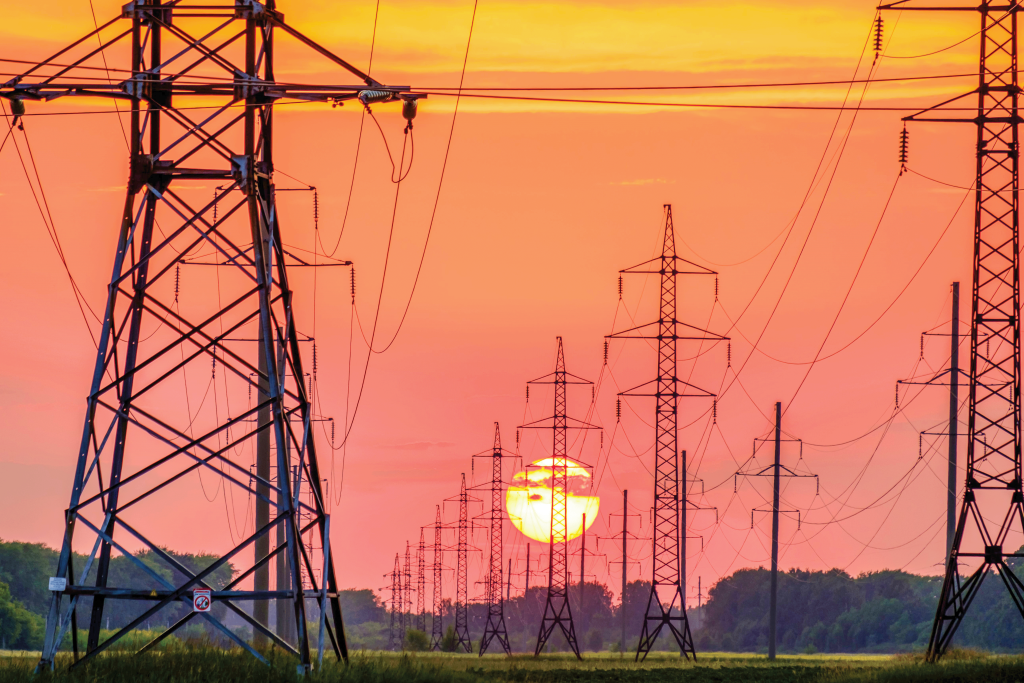
Essays
It’s time to focus on making lasting carbon reductions
By Majid Jafar
Financing a sustainable and inclusive energy transition with an eye toward COP28
By Bernard Mensah
Tackling the global energy crisis in 2023 requires a greater emphasis on energy security
By Steven Kobos
Road to COP28: Why the growth of nuclear must be part of the net-zero solution
By H.E. Mohamed Al Hammadi
Electrification and decarbonization: the UAE as a springboard for action for 2023’s top two priorities
By Roger Martella
Since the onset of the pandemic, energy markets have experienced significant volatility, a trend that, under the current geopolitical climate, was sustained throughout 2022. And while oil and gas prices often garner the most headlines, the past year was unique in that electricity prices witnessed wild swings as well; at one point, European power prices reached the equivalent of $1,000 per barrel of oil.16Anna Shiryaevskaya, “How Much Is Power in Europe? It’s Now Equal to Oil at $1,000 a Barrel,” Bloomberg news article on BNN Bloomberg site, Bell Media, August 23, 2022. However, for the United States and, especially, for Europe, the underlying cause of what might previously be considered unfathomable power market prices points to an imbalance in the natural gas market.
While the increase in global natural gas and crude oil prices predates Russia’s invasion of Ukraine, there was an undeniable price spike after February 24, 2022. Following the invasion, a combination of constrained supply and international sanctions against Russia further affected prices, with the cost of natural gas in early autumn rising higher due to European efforts to fill its storage facilities before winter, including through imports of US liquefied natural gas (LNG). These challenging market conditions were com- pounded by weather-induced demand following record-busting summer heatwaves, including one that saw temperatures in the United Kingdom soar 36 degrees Fahrenheit (20 degrees Celsius) above normal for the country.17Matthew Cappucci and Jason Samenow, “These Maps Show How Excessively Hot It Is in Europe and the U.S.,” Washington Post, July 18, 2022, https://www.washingtonpost.com/climate-environment/2022/07/18/heatwave-europe-unitedstates-records-uk/. As the war in Ukraine carries on, it is no surprise that, among survey respondents, the dominant explanation for price volatility in 2022 is the use of energy for political leverage, cited by 49 percent of respondents.
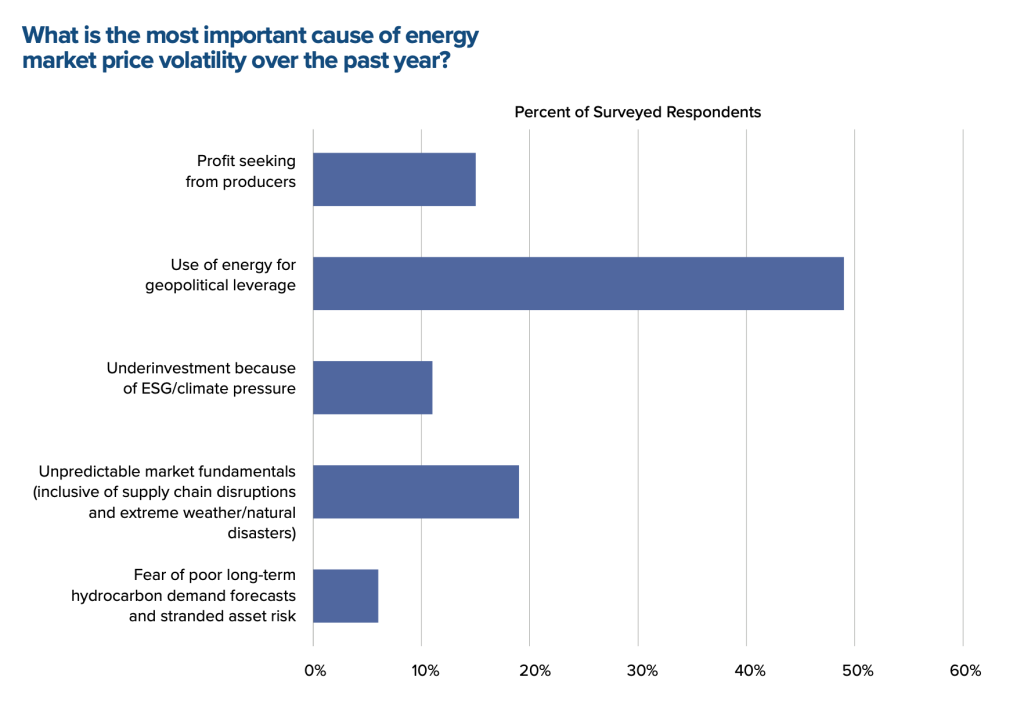
The events of 2022 illustrate how instability in conventional energy markets can weigh on the global economy and impact the public debate about how best to pursue an inclusive and equitable energy transition. Global upheaval in natural gas trade over 2022, however, did little to dissuade respondents of natural gas’ utility to global market stability. Respondents to the 2022 survey continue to see a long-term role for natural gas, consistent with the perspective of respondents in 2021. In fact, the majority (56 percent) believe that natural gas has a permanent future in the energy mix, although many also predict total consumption will decline somewhat. Meanwhile, among those who say the world will phase out gas, almost all think that the process will take decades.
While general consensus about the role of natural gas has not extensively changed over the past two years, the most recent survey did reveal pronounced geographic shifts. MENA respondents are now more likely than last year’s respondents from the same region to see gas as a destination fuel with a permanently large share of the market. The proportion of Europeans predicting that status for gas dropped markedly, from 15 percent to 6 percent, and now, for the first time, more than half believe that the fuel will eventually be phased out. The supply shock of 2022 may not just have an effect on the Russian market for gas in the region; from a European perspective, it could reduce the market overall.
Moving forward, the turmoil of 2022 has led to little change in the perception of the primary driver of energy price changes in the coming decade: about a third of respondents see unpredictable market fundamentals as the top cause of energy price volatility. As in the prior year, however, those who see a global shift away from fossil energy occurring in rapid fashion (energy transition bulls) more often point to the risk of countries seeking geopolitical leverage as the primary market driver. On the other hand, those who are skeptical of the world’s ability to wean itself from reliance on oil and gas (energy transition bears) more frequently point to a lack of investment due to environmental, social, and governance (ESG) factors and unpredictable market fundamentals, which they see as the leading cause of greater energy price volatility in the decade ahead. Interestingly, the total number of respondents citing use of energy for geopolitical leverage declined by six percentage points to 23 percent, a change that perhaps reflects the view that Russia’s shift from speculative to active hostility results in its diminished ability to leverage energy for geopolitical gain.
Starker differences in opinion emerge when looking at survey data through an industry lens (i.e., oil and gas respondents versus those from zero-emission industries such as renewables and nuclear). While about a third of both groups think that unpredictable fundamentals will be the biggest driver of volatility, their other responses diverge. Survey participants that work in the oil and gas industry reject the idea that profit seeking will be a leading issue in markets. Instead, they assert that green-driven underinvestment will play a more substantial role than even market fundamentals. Respondents working in clean energy see geopolitics as a major cause of market uncertainty, and one in six respondents also point to producer profit seeking.
Even assuming those in the clean energy sector are correct and the risk is diminishing, as 2023 progresses and Russia’s aggression persists, policymakers and the private sector would be wise to consider how to mitigate the geopolitical risks of energy. As our essay authors in this chapter explain, the antidote is investment.
Investing in the old energy system and the new is not an either-or proposition. New oil and gas projects are needed to avoid geopolitically motivated volatility and ensure as smooth an energy transition as possible. Stable energy markets are needed to guarantee societal buy-in for the transition and avoid empowering anti-decarbonization populists. Longer-term investments in clean technologies and their supply chains can maximize the geopolitical benefits of distributed energy production and avoid future supply shocks. In all cases, the diversification of all facets of the energy system is key.
Partner perspective
It’s time to focus on making lasting carbon reductions
For years, policymakers focused on novel solutions to tackle one leg of the energy trilemma—pushing renewables at the cost of hydrocarbons. 2022 taught us that real cuts to carbon emissions require reliability and affordability to also be in balance.
By Majid Jafar
The year 2022 will be remembered as one of economic pain and missed opportunities, as the first truly global energy crisis took hold. After years of pushing renewable energy projects at the cost of oil and gas development, almost every government from Europe to the Americas has found itself reversing some of those policies or putting them on hold to overcome the crisis. In turn, policymakers have turned to energy producers from Venezuela to the Middle East and North Africa to boost energy flows and even reopened old coal-fired plants.
In the United States, the Biden administration, which has promised a clean energy revolution, called for a suspension of gasoline taxes, and lobbied Saudi Arabia to pump more oil. In Germany, concerns that the Mittelstand would not be able to keep the lights on sent leaders scrambling to secure supplies of liquefied natural gas (LNG) on world markets, pricing out developing countries. And in the United Kingdom, mothballed coal power plants were restarted as policymakers urged residents to lower their thermostats in a bid to cut energy demand.
The biggest lesson in this human-made crisis is that the path to the carbon transition is just as important as the destination itself. Policies that glossed over the importance of resilience in the energy system meant supply shortfalls quickly had massive economic and political impact. That may ultimately hamper long-term efforts to make lasting reductions in the world’s carbon footprint, which is the ultimate goal.
The International Energy Agency estimates that, to reach net-zero emissions by 2050, annual investment in energy supply must reach $5 trillion a year; the energy crisis, and the chaotic response to it, may have dampened enthusiasm for that level of investment.
Like good health, it was easy to forget about energy supply when it was plentiful, but it became central as soon as shortages began in 2021. In the case of energy supply, however, shortfalls are experienced more like a heart attack to the economy.
Investment shortfall
Sadly, this was a predictable and preventable crisis. For years, an estimated $300-billion shortfall in investment in oil and gas has been met with warnings of impending shortages. On average, the world loses four to five million barrels a year from natural decline in existing oil fields, even if demand were steady. Significant investment is needed to maintain production levels, but that investment wasn’t being made to scale.
Worse, the focus on climate-lulled policymakers into believing that oil and gas will be obsolete, leading financial markets to shy away from long-term investments in the sector. This was common across the energy system: underinvestment in nuclear power, for example, meant even further energy supply shortfalls.
Investment in renewables did not keep pace with the lost energy supply either. In 2021, 13.5 percent of global primary energy came from renewable technologies, representing double-digit growth over recent years, but far from replacing any other source of energy. More significantly, two-thirds of that total actually came from existing hydropower, biomass, and other sources which have been impacted by drought and other weather challenges. Most projections agree that renewable energy sources will remain just one part of the energy mix.
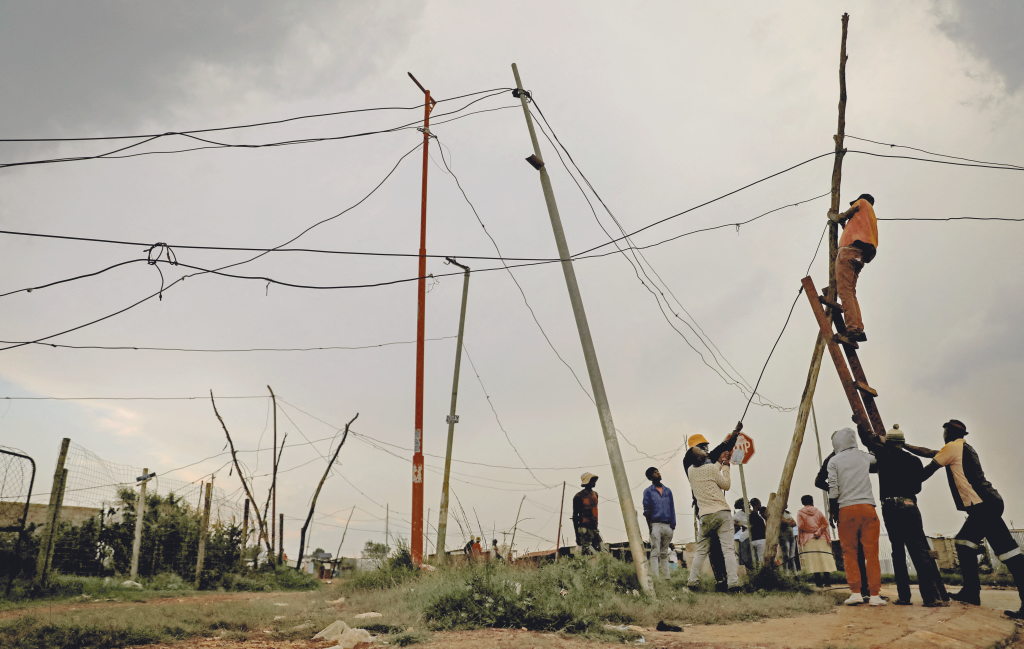
The third major challenge has been the shutdown of nuclear power plants in Europe and the commensurate increased reliance on coal in some countries, which proved self-defeating just as energy demand rose in the post-COVID recovery period. As nuclear is phased out from some European countries, the United States, Japan, and others have taken a renewed interest in nuclear. However, it may take years to bring the next generation of reactors online.
By 2022, years of chronic underinvestment across the energy spectrum and rapidly growing demand, particularly from the developing world, turned a supply imbalance into a global crisis. The conflict in Ukraine simply accelerated the crisis just as demand began to spike due to the global economic recovery.
Putting the developing world up front
Nowhere will these factors have a bigger impact than in the developing world, where many view the energy crisis as a problem created elsewhere that they must now pay for. Policymakers in the developing world say they will ultimately bear the biggest burden in tackling the effects of climate change, despite having had a small, even negligible, role in creating it.
Unlike the rich world, developing countries face a notably different set of considerations. As energy demand in the developing world climbs at double digit rates, current systems remain highly centralized and inefficient. Traditional regulation has been ineffective, and basic access to energy remains limited, with many suppliers operating at a net loss. Many consumers are subsidized, but subsidies aren’t always well targeted, and can often lead to inefficient consumption patterns. Ultimately, the ability to pay for new infrastructure is limited.
With barely a fraction of the carbon footprint of developed countries, developing countries in Africa and Asia say they are being forced to give up access to traditional low-cost energy supplies just as they enter a stage of rapid growth. With more than one billion people still lacking access to basic electricity service, the pressure to eschew traditional energy systems risks dampening badly needed economic growth. The result, especially in the developing world, is an increase in energy poverty even as demand continues to rise.
It behooves policymakers to enable the developing world to move to lower carbon emitting fuels such as natural gas, as well as solar power, to begin the process of cutting emissions without burdening their economies with major costs they cannot afford.
Taking a more holistic view
There is another path forward to a more sustainable world. The global energy crisis has lent credence to the concept of the energy trilemma, which encourages a holistic view of the energy system to bring about real change to the system. The trilemma posits that healthy energy systems must be in careful balance with supply availability, affordability, and sustainability to work efficiently. Fundamentally, climate change is a matter of emissions, not of energy consumption. To reduce the world’s carbon footprint, we must cut carbon emissions for a given amount of energy consumed. Many policies in recent years have targeted energy production, effectively starving the world of supply even as demand continued to rise.
Maintaining this balance in the context of the energy transition is challenging as trade-offs between equally critical priorities become clear. By balancing resilience and affordability with sustainability, policymakers can ensure that the carbon transition process continues and the effects bring about true change.
Finding balance in the trilemma also helps clarify priorities and defines long-term roadmaps. For example, ensuring energy resilience, especially with cleaner burning natural gas, to avoid future supply shocks as energy systems are electrified will be crucial. Similarly, hydrogen from natural gas or electrolysis will further reinforce resilience in the system. So, too, will an embrace of modern nuclear power.
Finally, a more holistic view of the trilemma enables greater predictability in the energy system even as renewable energy adds further uncertainty due its intermittent nature. Spurring investment in resilience will require steadily extending measures with more certainty about which energy sources can be used, for how long, and for what purpose.
Politicians and policymakers, particularly in the West, must now confidently stand before voters to champion a more balanced energy system that includes oil and gas, nuclear power, and renewables. The net result of this balance is that real cuts in emissions will take hold; investment in renewables will continue, but not at the cost of resilience and balance.
The energy shock of 2022 will change the world in countless ways. But it can also be a moment to trigger smarter policy and the investment needed to resolve the conflict between resilient energy supply and lower carbon emissions.
Majid Jafar is the chief executive officer of Crescent Petroleum and a member of the Atlantic Council’s International Advisory Board. Crescent Petroleum is a sponsor of the 2023 Atlantic Council Global Energy Forum.
Partner perspective
Financing a sustainable and inclusive energy transition with an eye toward COP28
By Bernard Mensah
Climate change demands an urgent call to action. Identifying the problem—or indeed the solution—is the easy part. We must slash carbon emissions to maintain a livable planet.
Taking the goals set out in the Paris Agreement as the aspirational baseline, COP27 highlighted that there remain large ambition, policy, and implementation gaps. Crucially, COP27 underlined a lack of alignment between developed and developing countries regarding the best way forward with factors beyond climate coming into play. Before the climate talks even began, host nation Egypt said soaring food and fuel prices combined with ballooning foreign debt complicated its climate ambition.18“Egypt’s First Updated Nationally Determined Contributions,” United Nations Framework Convention on Climate Change, June 8, 2022, https://unfccc.int/sites/default/files/NDC/2022-07/Egypt%20Updated%20NDC.pdf
This lack of alignment across countries means that we are, at best, currently on a slow route to victory. However, finance can play a critical role in accelerating the path forward. Finding the right balance and interplay between public and private finance will be a key catalyst. And importantly, innovation in finance can help ensure a just transition that allows the developed and developing worlds to be better aligned towards our shared goals.
The needs are vast: worldwide, 770 million people still live without access to electricity.19“Access to Electricity,” International Energy Agency, April 2022, https://www.iea.org/reports/sdg7-data-and-projections/access-to-electricity. Alongside the expansion of renewables, significant investment will be needed to build sustainable grid capacity, introduce electric vehicles, and produce green hydrogen for industrial use.
According to a report commissioned by the governments of Egypt and the United Kingdom ahead of COP27, cutting carbon emissions, strengthening climate resilience, and dealing with historical loss and damage resulting from climate change will require an estimated total annual investment in developing countries (excluding China) of $1 trillion by 2025 and over $2 trillion by 2030.20“COP27 Report Calls for International Investments of $1 Trillion Annually by 2030 in Climate Action in Developing Countries,” Graham Research Institute on Climate Change and the Environment, press release, November 8, 2022, https://www.lse.ac.uk/granthaminstitute/news/cop27-report- calls-for-international-investments-of-1-trillion-annually-by-2030-in-climate-action-in-developing-countries/. While the bulk of that finance must come from the private sector, governments can enhance the effectiveness of each dollar of private capital raised.
For example, investors’ perception of risk is far higher in emerging markets. According to the International Energy Agency, the cost of capital for a solar project can be as low as 2.6 percent in Europe and as high as 10 percent in India— and that was before the recent Federal Reserve interest rate hikes.21“The Cost of Capital in Clean Energy Transitions,” International Energy Agency, December 17, 2021, https://www.iea.org/articles/the-cost-of-capital-in-clean-energy-transitions. Arguably, on a climate risk-adjusted basis, this risk premium is much too high and leads, therefore, to a suboptimal allocation of resources and a slower route to our destination.
There are several ways governments can play a part in reducing this risk premium:
• Regulation. The UK is a world leader in off-shore wind, with around 13 gigawatts installed.22“Energy Security Bill Factsheet: Offshore Wind Environmental Improvement Package,” GOV.UK, updated December 29, 2022, https://www.gov.uk/government/publications/energy-security-bill-factsheets/energy-security-bill-factsheet-offshore-wind-environmental-improvement-package. Alongside its island geography, “contracts for difference” play a critical role in the UK’s regulatory framework. These incentivize private investment by providing revenue certainty, while being awarded through an auction system to keep costs down.
• Pricing. Carbon pricing tilts the market away from heavy emitters, but there are just seventy carbon taxes or emissions trading schemes worldwide, counting all country, city, and regional initiatives.23“Carbon Pricing Dashboard,” The World Bank, last visited January 4, 2023, https://carbonpricingdashboard.worldbank.org. Most of these schemes currently price carbon below the $75 a ton the International Monetary Fund believes is necessary to limit global warming to 1.5 to 2 degrees Celsius above pre-industrial levels.24“Boosting MDBs’ Investing Capacity: An Independent Review of Multilateral Development Banks’ Capital Adequacy Frameworks” G20, July 2022, http://www.g20.utoronto.ca/2021/210710-finance-annex-1.html.
• Subsidy. The Inflation Reduction Act, the largest climate investment in US history, provides a range of green incentives, including tax credits for companies that build sources of clean energy, as well as extending and bolstering tax credits for the purchase of electric vehicles.
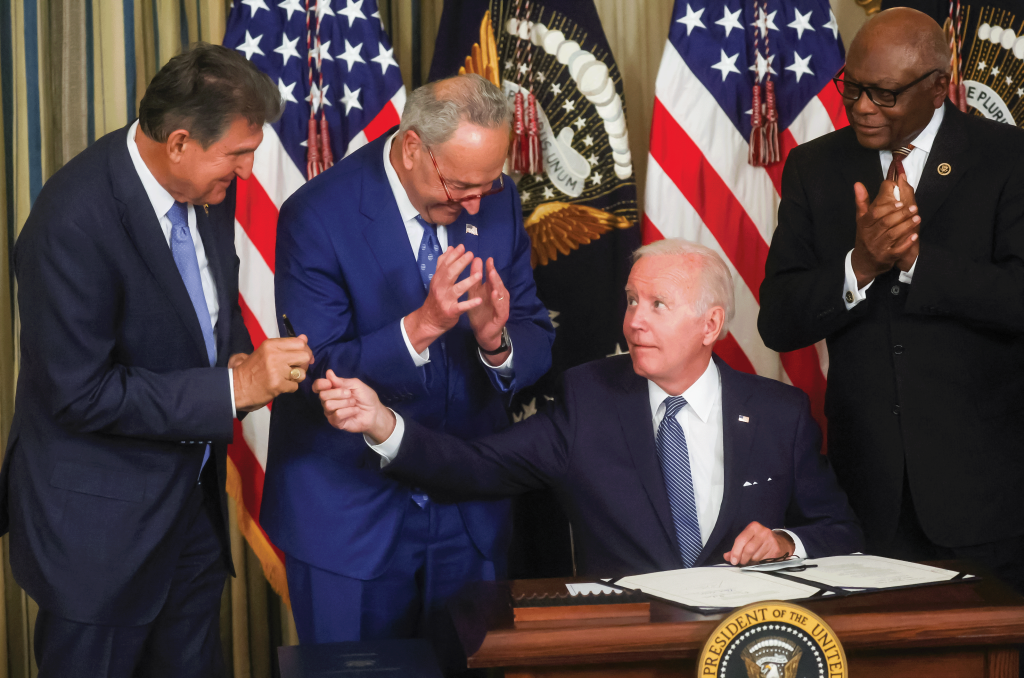
Public investment can also reduce the risk premium on private capital. The Just Energy Transition Partnerships—in which rich countries club together to speed the transition away from coal in developing nations—offer a model of how this can be done. The latest partnership to be announced with Vietnam brings together $7.75 billion in pledges from rich countries with a plan to raise a matching $7.75 billion from Glasgow.
Financial Alliance for Net Zero (GFANZ) institutions, including Bank of America.25“UK Export Finance Launces New Debt Solution to Help Developing Countries with Climate Shocks,” GOV.UK, November 8, 2022, https://www.gov.uk/government/news/uk-export-finance-launches-new-debt-solution-to-help-developing-countries-with-climate-shocks. This has been modeled on the partnerships announced between donor governments and both South Africa and Indonesia at COP26 and the 2022 G20 summit, respectively, providing a possible public-private template for achieving an accelerated phaseout of coal.
There is also an urgent need for multilateral development banks and other public international financial institutions to play a bigger role as facilitators in the public-private partnerships required to drive and achieve a just transition. As an independent report commissioned by the G20 noted recently in July, these institutions could successfully recalibrate and refine their risk appetite around these partnerships by paying less attention to ratings agencies and more attention to prioritizing the risks their shareholders specify.26Hannah Ritchie and Max Rosner, “Energy Mix,” Our World in Data, last visited January 4, 2022, https://ourworldindata.org/energy-mix. Such recalibration would allow them to deploy more money, or to put capital to work with a higher risk appetite, mobilizing significant and much-needed private debt and equity capital as a result. Current capital mobilization ratios are around 1:1. These ratios need to be increased by an order of magnitude to 10:1 to successfully deliver the quantum of climate finance currently needed in emerging markets. The fact that reform of the public finance architecture was included in the cover text of the COP27 decision in Sharm el Sheikh suggests that there is now sufficient momentum to achieve the necessary reforms.
There is scope for further creative thinking around the relationships between rich countries and developing ones. UK Export Finance recently became the first export credit agency in the world to introduce a climate debt clause, thereby allowing low-income countries to defer repayment in the event of a climate shock.27Matthew S. Jaremski, National Banking’s Role in U.S. Industrialization, 1850-1900, National Bureau of Economic Research, 2013, https://www.nber.org/ system/files/working_papers/w18789/w18789.pdf. The Seychelles has agreed to a debt-for-nature conversion, in which debt held by European countries was bought with funds from the Nature Conservancy, a conservation organization, freeing up finance to protect swaths of the Indian Ocean. Several other such deals are in the pipeline and offer opportunities to reduce debt burdens, protect marine livelihoods, and ensure that nature continues to play its vital role in regulating the climate.
The scale of the challenge is vast: globally, fossil fuels still account for more than 80 percent of energy consumption.28“Launch of IMF Staff Climate Note: A Proposal for an International Carbon Price Floor Among Large Emitters,” International Monetary Fund, June 18, 2021, https://www.imf.org/en/News/Articles/2021/06/18/sp061821-launch-of-imf-staff-climate-note. But the present challenges have their analogs in the past. During the first industrial revolution, banks played a critical role in supporting those entrepreneurs with the best chances of success and putting capital to work.29International Agreement to Support Vietnam’s Ambitious Climate and Energy Goals,” Gov.Uk, press release, December 14, 2022, www.gov.uk/government/news/international-agreement-to-support-vietnams-ambitious-climate-and-energy-goals. There is undoubtedly deep value to be unlocked in the net-zero transition, but it will only be released where innovation and collaboration happen at scale and speed.
That is both the challenge and the opportunity in the months between now and COP28: to drive reform, establish new partnerships and advance yet more public-private collaboration. We need to decarbonize the existing system as well as green the new one. We need to find an inclusive and just approach—an approach that reduces emissions at speed and scale while not holding back progress, especially in the developing world. We need to find a faster route to success.
Bernard Mensah is president of International for Bank of America and the chief executive officer of Merrill Lynch International (MLI). Bank of America is a sponsor of the 2023 Atlantic Council Global Energy Forum.
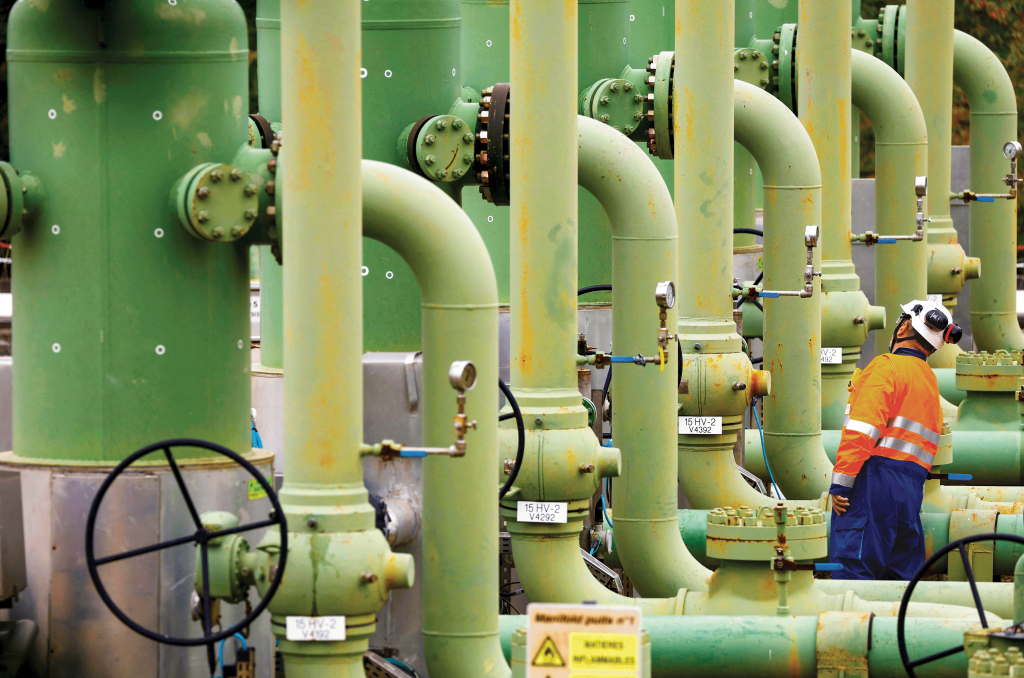
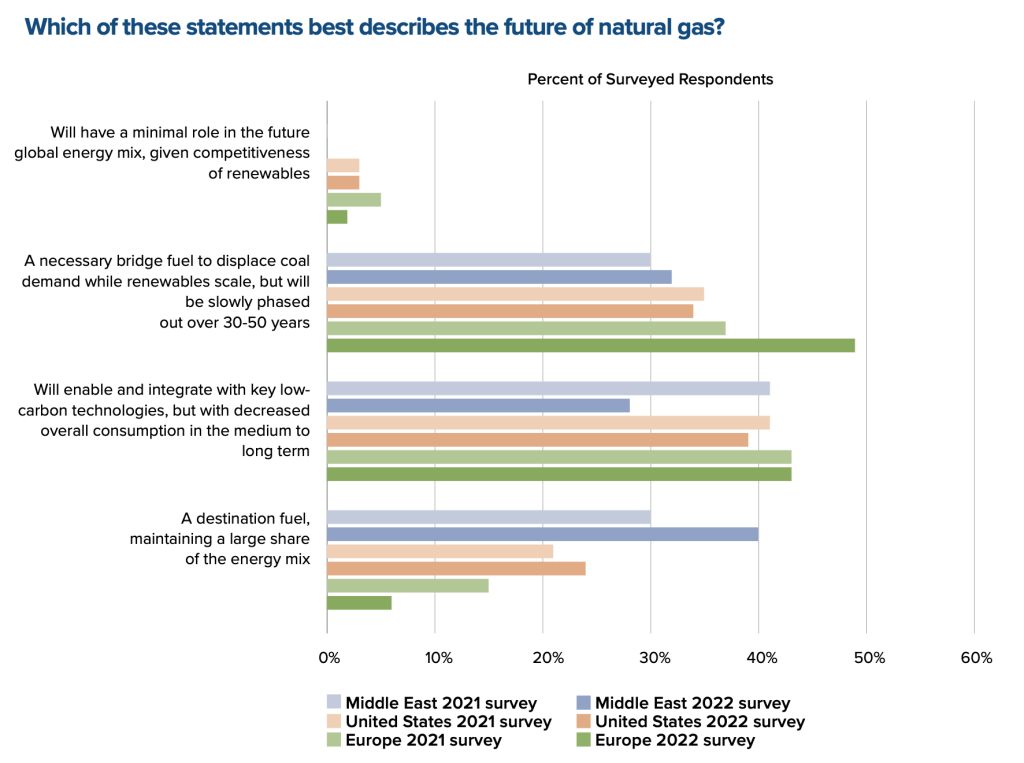
Partner perspective
Tackling the global energy crisis in 2023 requires a greater emphasis on energy security
By Steven Kobos
Today, the world is facing an energy crisis that is unprecedented and arguably the most significant energy market disruption since the 1970s. Although initial headwinds were seen in late 2021, Russia’s invasion of Ukraine and subsequent curtailment of gas flows into Europe exacerbated the situation, resulting in “the first truly global energy crisis,” according to the International Energy Agency (IEA). Many countries are adopting energy policies that take into consideration security of supply, food security concerns, and the advancement of climate change goals. It has become increasingly clear that tackling the global energy crisis will require policymakers to place a greater emphasis on enhancing energy security to navigate the challenges ahead.
Energy market outlook
With much of the global energy market still in flux, predicting how events will unfold in the year to come is difficult. However, based on what we know today, we can make some broad assumptions for the 2023 energy market.
The global liquefied natural gas (LNG) market is expected to remain tight in 2023, due to the lack of new liquefaction projects coming online over the next twelve months. Global gas markets will continue to balance demand destruction and inventories rather than LNG supply growth. Any additional natural gas supply disruptions in 2023 will increase volatility in an already tight market.
2023 will be the first full year that Europe will not have significant Russian pipeline gas imports. An increase in the deployment of flexible LNG import infrastructure will allow substantial access to alternative natural gas markets and help ease the import bottlenecks experienced in 2022—mainly in northwestern and southern Europe. As an example, on December 28, Excelerate’s floating storage and regasification unit (FSRU), the Exemplar, arrived at the port of Inkoo, Finland, to provide critical regasification services to Finland and the Baltic countries for the next ten years. Another Excelerate FSRU, the Excelsior, has been chartered to Germany on a five-year contract beginning in the first quarter of 2023.
China’s changing coronavirus policies will be an important factor in global energy demand. The country’s zero-COVID policy decreased China’s gas demand in 2022, providing some relief for global gas markets. The easing of China’s COVID restrictions, however, will generate greater energy consumption in the world’s most populous country. The repercussions will be felt in the Asia-Pacific region and beyond.
If the war in Ukraine extends well into 2023, the competition for finite LNG supply will remain intense. This will force spot-dependent importers in regions like Latin America and South Asia to look for alternative sources, including domestic gas production and other fuel types.
Food security
Too often, energy security is mistakenly viewed only through the narrow lens of being able to reliably power homes, businesses, and transportation. The actual implications of energy insecurity are much broader in scope. Energy is the driving force of transformative socioeconomic opportunities. It touches on every aspect of sustainable development—none more important than food security. Throughout the agro-industrial supply chain, energy is needed, from making fertilizer for growing crops to harvesting, processing, preserving, transporting, and cooking. It is inevitable that populations that lack access to secure and flexible energy infrastructure will experience some form of food insecurity.
Energy transition
The current energy crisis is also influencing global perspectives on the transition to a clean energy future. While higher fossil fuel costs may drive developed countries to accelerate their net-zero plans, it is likely that capital-constrained developing countries may revert to more carbon-intensive fuels like oil, coal, and even wood as major energy sources. Coupled with lingering effects of the global pandemic, the IEA estimates that the energy crisis means “75 million people who recently gained access to electricity can no longer afford it, and 100 million people may no lon- ger be able to make food with clean fuels, returning instead to biomass.”30World Energy Outlook 2022, International Energy Agency, Revised Version, 2022, https://www.iea.org/reports/world-energy-outlook-2022.
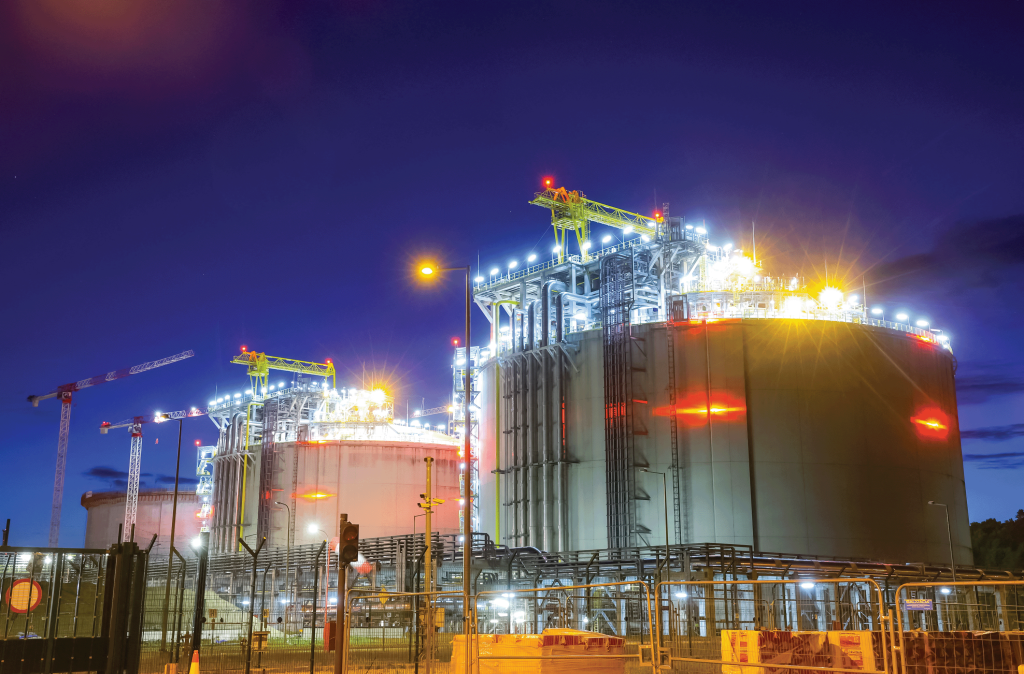
As we gather in Abu Dhabi for the Global Energy Forum, we also look ahead to COP28 to be hosted in Dubai from November 30 to December 12. Between these events, this question must be addressed: can a just transition be achieved, one that allows governments to balance energy security with climate action?
If we are to tackle the global energy crisis in 2023, it is imperative that the energy industry and government leaders enter the year with a renewed focus on energy security. Policymakers must continue to equip their countries with the flexible infrastructure needed to weather the figurative and literal storms ahead. Through a collective partnership, we will all rise to meet the myriad challenges that remain at the top of the global energy agenda.
Steven Kobos is the president and chief executive officer of Excelerate Energy. Excelerate Energy is a sponsor of the 2023 Atlantic Council Global Energy Forum.
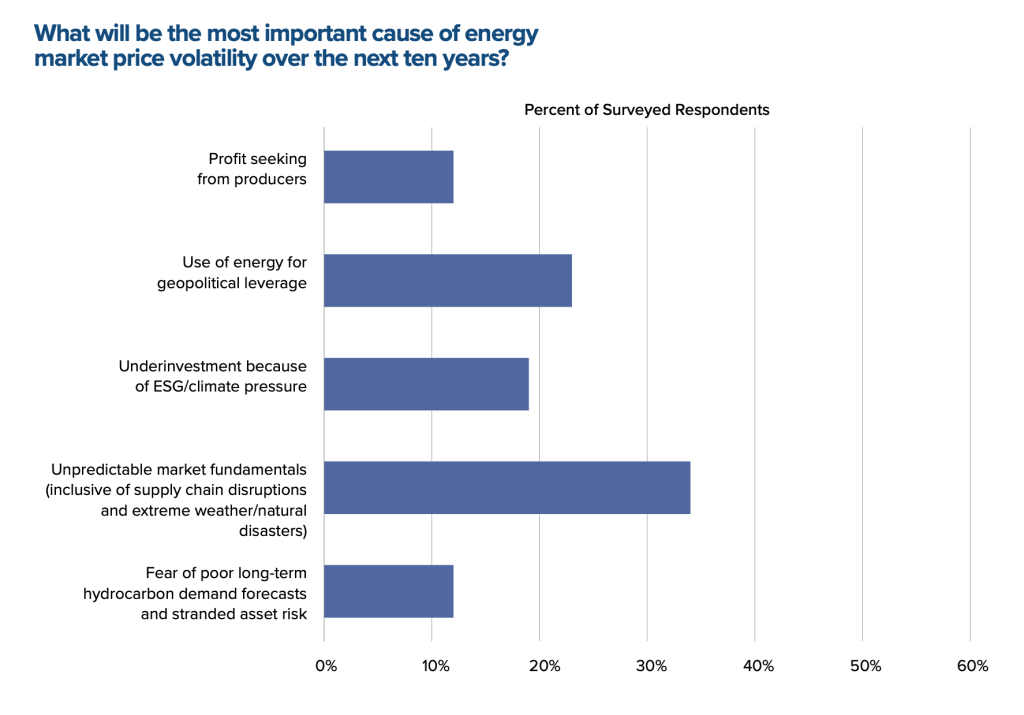
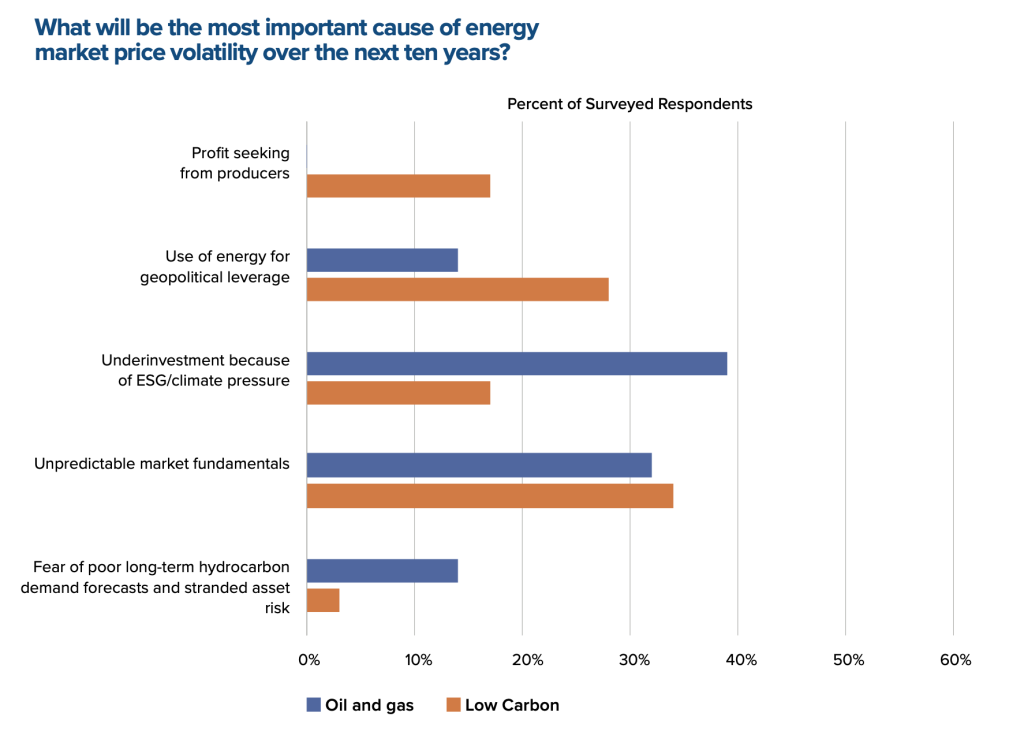
Partner perspective
Road to COP28: Why the growth of nuclear must be part of the net-zero solution
By H.E. Mohamed Al Hammadi
At the opening of COP27 in Sharm el Sheikh, UN Secretary General António Guterres warned world leaders that we are engaged in “the fight of our lives” for a safe and livable planet.
His pivotal address served as a stark reminder that despite years of climate policy, sustainability pacts, and carbon targets, global temperatures keep rising, greenhouse gases keep building up, and we are fast approaching the point of no return in our battle against global warming.
The UN Framework Convention on Climate Change (UNFCCC) recently stated that the combined pledges of 193 countries put the world on track for a temperature increase of 2.5 degrees Celsius by the end of the century—well short of the 1.5 degrees target needed to avoid the worst effects of climate change. In fact, the data from the UN’s Intergovernmental Panel on Climate Change shows that carbon emissions would need to be cut 45 percent by 2030 against 2010 levels to limit temperature rise to 1.5 degrees.
At the conclusion of COP27, despite the creation of a fund to help developing nations face the devastation of climate change, negotiations failed to secure stronger commitments on cutting greenhouse gas emissions enough for them to peak by 2025, or on phasing down unabated fossil fuels.
The message to the world was clear: we are failing to fulfill our net-zero promises and must take faster and more decisive action. We must use the realistic and feasible solutions we have in our hands today and adopt a transformational approach to change if we are to avoid a climate catastrophe.
Nuclear energy holds the potential to revolutionize our clean energy transition. Indeed, global experts agree there is no credible pathway to net zero without it.
The International Energy Agency (IEA) projects that nuclear-generated electricity must grow by more than 109 percent in order to achieve net-zero by 2050. And while we have seen a resurgence of support for investment into nuclear technologies in the past two years—spurred by unprecedented social and economic disruption—it is simply not enough.
While we saw a number of nuclear energy organizations represented at COP27, if we truly want to shift the dial on climate action toward the road to COP28, now is the time to completely clear the way to demonstrate the true role of nuclear energy today, and ensure it is supported to make an even greater contribution to our sustainable future.
The good news is the UAE provides the best-practice blueprint the world needs to get this done.
In little over a decade, our country has illustrated that nuclear as part of a balanced clean energy portfolio can rapidly decarbonize the power sector and deliver an economically viable and time-critical solution to clean energy security. Today, our plant at Barakah is the largest clean electricity generator in the Arab world, producing electricity 24/7 with zero emissions. Once all four units are fully operational in the near future, it will account for 25 percent of the UAE’s Nationally Determined Contribution for emissions reductions.
As an essential component of the UAE’s net-zero strategy, nuclear energy supports our nation’s energy security by diversifying our energy mix and freeing up natural gas that would have otherwise been used for domestic electricity production—an amount equivalent to around 200,000 barrels of oil per day. This achievement will allow us to double liquefied natural gas (LNG) exports and support our aim of becoming a net gas exporter by 2030.
The electricity generated from Barakah is also providing the clean electricity needed for local companies to access environmental, social, and governance (ESG) funding and investment. Through the Abu Dhabi Clean Energy Certification (CEC) program, domestic enterprises can demonstrate their green credentials and decarbonize their operations through the purchase of clean energy certificates of renewables and nuclear energy.
But the value of our investment in nuclear does not end there. We are building a thriving net-zero economy: creating entirely new value chains, opening new markets, and improving the intellectual wealth of our nation.
By incubating strategic investments in nuclear energy, we are accelerating research and development in nuclear science, small modular reactors (SMRs), and advanced reactor designs. We are also driving innovation in related fields and building crucial links to other clean fuels such as hydrogen, where nuclear is set to play a vital role in delivering the growing amounts of hydrogen needed for net-zero with the lowest carbon foot- print possible.
Our commitment to nuclear as part of a clean energy system places us at the forefront of clean energy leadership worldwide and is powering our sustainable growth. The UAE’s recent strategic partnership agreement with the United States to invest $100 billion to produce 100 gigawatts of clean energy globally by 2035 is a demonstration of this. We are looking forward to working with our US partners to promote advanced reactor designs and SMRs, and to promote nuclear energy as a clean energy solution to drive emissions reductions.
There is no doubt that our world needs large-scale decarbonization and energy security, now more than ever. By adopting a long-term, holistic, and data-based approach to energy policy that prioritizes diversification, decarbonization, and electrification, the UAE model has shown how this can successfully be achieved.
As we look ahead to COP28, my hope is that our experience can encourage others to move past the outdated misperceptions and politics that stand in the way of greater nuclear energy uptake and allow others to access the huge potential this technology offers as the net-zero solution our world so desperately needs.
H.E. Mohamed Al Hammadi is managing director and chief executive officer of the Emirates Nuclear Energy Corporation (ENEC). ENEC is a sponsor of the 2023 Atlantic Council Global Energy Forum.
Partner perspective
Electrification and decarbonization: the UAE as a springboard for action for 2023’s top two priorities
By Roger Martella
In 2023, the United Arab Emirates is taking center stage in the global efforts to address climate change and sustainability. Leaders will soon gather for Abu Dhabi Sustainability Week, kicking off a year of events leading up to the UAE-hosted COP28 at the end of the year. This momentum, following on the heels of the successful implementation COP27 in Egypt, will help continue driving positive action in emerging markets and globally for the decade to come.
The efforts that will be in focus at these events align closely with two key priorities in 2023: electrification and decarbonization. Private industry and governments must partner to make progress on both goals in parallel: growing access to electricity, while decarbonizing the energy, transportation, and industrial sectors.
Electrification
Entering the new year, access to reliable, affordable, and sustainable electricity is top of mind for billions of people globally—in a way that it has not been in decades. Nearly 775 million people lack access to electricity. However, even for those with more reliable access, extreme weather events, global conflicts, cybersecurity, and growing demand are increasingly raising questions about the security of supply. At a recent White House Summit, US Secretary of Energy Jennifer Granholm said the United States needs a “tripling” in the rate of electrification and “new architecture.” Many nations are looking at similar goals.
Access to power is a core sustainable development right. As the global community takes important action for climate change—which includes placing increasing demands on the grid by electrifying other sectors—we must make the right investments to ensure everyone has access to the lifeblood services associated with electricity. Thus, setting the right path for electrification is a 2023 priority.
In many countries, work must begin now on grid digitization and modernization to make grids smarter and more robust. That means adding advanced distribution networks, hybrid systems, and energy storage to manage the complex grid requirements of tomorrow’s renewables-heavy grid, as well as the even longer-term multifaceted, multi-directional grids of a net-zero future. An essential part of building this grid is cybersecurity and digital defenses.
Modernizing transmission and distribution infrastructure means using the latest protection, control, monitoring, and diagnostic technologies and software to monitor the health of equipment across the system and better manage key infra- structure, such as substations.
In other parts of the world, it’s not just about grid resilience. It’s about building the grid in the first place. These new systems can feature world- class digitization and resilience systems, leap-frogging older transmission and distribution infrastructure.
Fortunately, while the risks are significant, so is the sense of urgency and action. The International Energy Agency says that global investment in power grids should grow from $260 billion today to $820 billion in 2030. In 2022, GE saw nations increasingly prioritize grid infrastructure in unprecedented ways through investment. In 2023, the focus must be on how to deploy these commitments swiftly and strategically to ensure the grid is well positioned to meet growing demands and threats and to succeed in decarbonization goals.
Decarbonization
Building a more resilient grid enables success for the second priority: progress toward decarbonization goals. As a global energy company, we think of decarbonization in two ways: (1) deploying diverse generating technology today to make progress in lowering both emissions and carbon intensity, while (2) investing in the breakthrough technologies of tomorrow to achieve net zero.
The near-term reductions are dependent on investing in a portfolio of renewable energy, efficient gas power, and advanced nuclear to reduce emissions while generating more electricity. Our overarching goal is to grow wind as quickly as possible and in increasing amounts over this decade. Growing support for nuclear and hydro energy such as pumped storage in policies around the world is also welcome. All these technologies contribute to decarbonization by enabling energy production while lowering greenhouse gas emissions.
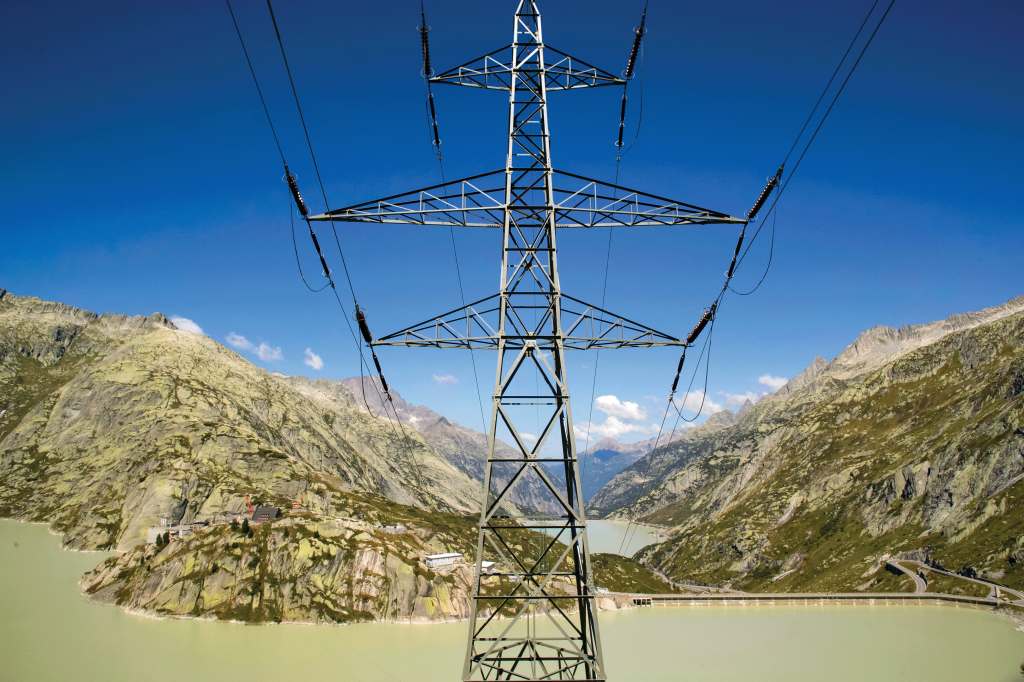
Importantly, efficient gas power also has a strong role to play in decarbonization plans. Deploying gas is frequently the fastest way to reduce emissions while enabling a strong foundation for building renewables and other generation assets. Gas turbines have a pathway to decarbonization—both pre-combustion with hydrogen and post-combustion with carbon capture and sequestration. Egypt should be applauded for a strong emphasis on pathways to decarbonizing fossil fuel technology at COP27—a theme we anticipate will continue at COP28.
While this diverse mix of assets will help decarbonize the energy sector this decade, these technologies will not be enough to meet net-zero goals. Research must continue on break- through technologies as well as implementation of pilot projects and full-scale deployments in areas such as low-carbon hydrogen and carbon capture utilization and storage (CCUS). Small modular reactors, an important technology for reliable, zero-carbon baseload electricity, also require more study and policy action to demonstrate government commitment and build public support for this safe, affordable, and nimble nuclear technology.
Taking action in 2023 to succeed for electrification and decarbonization
The start of a new year is always a time for reflection, for goal setting, and for optimism. The world is now three years into the “decade of action” on climate change, reinforcing the imperative for progress. For us to advance our goals of electrification and decarbonization, transitioning from discussion to implementation is essential. The actions we take now will set us up for success when we meet again in the UAE in November. In turn, that success will create the global momentum to carry us into future years, on a sustainable and equitable trajectory to deliver on a net-zero future for our communities and our planet.
Roger Martella is the chief sustainability officer of GE and vice president of GE Vernova Government Affairs and Sustainability. GE is a sponsor of the 2023 Atlantic Council Global Energy Forum.
Chapter 3: An inclusive energy transition
Essays
The year of COP28: Climate action requires financial empowerment and collaboration
By H.H. Sheikha Shamma bint Sultan bin Khalifa Al Nahyan
To travel the net-zero path, we must rethink international cooperation
By Francesco La Camera
The nexus between climate, water, food, and energy
By H.E. Yasmine Fouad
Just energy transition for Africa
By Kevin Kariuki
For a just energy transition, a new approach to mining is critical
By Adam Matthews
We can address climate change by accelerating the just energy transition
By Rajiv J. Shah
The landmark Paris agreement of 2015 set a goal of limiting warming to 1.5 degrees Celsius (compared to preindustrial temperatures) to avoid catastrophic effects of climate change. Six years later, during Glasgow’s conference in 2021, many countries made pledges to phase down coal, cut methane emissions, and stop public funding of overseas oil, gas, and coal development.
This year, the United Arab Emirates will take over the COP presidency from Egypt following COP27 in Sharm el Sheikh, where an agreement emerged to set up a “loss and damage” fund to support developing countries most impacted by climate change. The COP28 agenda includes a global stocktaking exercise that will review progress on nationally determined contributions (NDCs) to reduce emissions by 2030, which are intended to help ensure that the Paris Agreement’s goals remain within reach. The process, however, is likely to be a somber assessment of the world’s inability to act quickly enough; this could reinforce numerous UN Intergovernmental Panel on Climate Change (IPCC) reports noting that global efforts remain insufficient to limit global temperature rise to 2 degrees Celsius by the end of the century, much less 1.5 degrees Celsius.
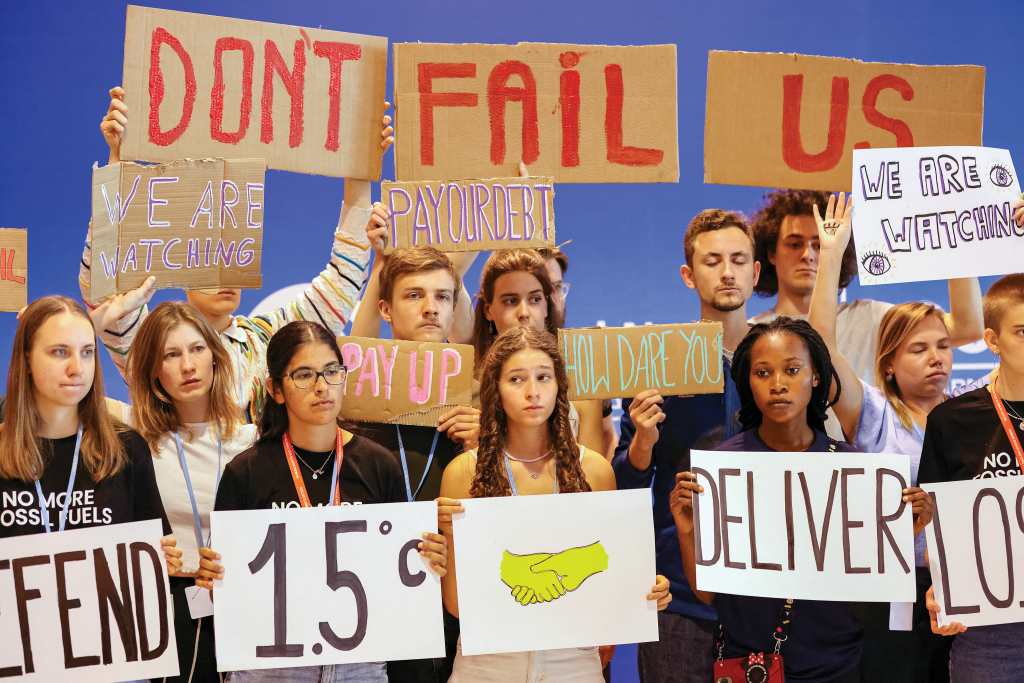
The 2023 Global Energy Agenda survey respondents have taken note and are unimpressed with progress to date. When describing progress on climate pledges in their own words, responses generally fall into four categories, which are (with representative examples in parentheses):
- Highly negative, in some cases even dismissive (“Impotence, feeble, tokenism”)
- Mixed—more negative than positive (“Desultory but positive”)
- Mixed—more positive than negative (“Steady but slow”)
- Highly positive (“Optimism, politics, profit”)
Although the majority of responses to this question were rather negative, these views represent a very modest improvement in perceptions toward COP26. In the 2021 survey, respondents were about 4.5 times more likely to give a negative evaluation than a positive one. In the 2022 survey, that figure is down to 2.5 times. Interestingly, the tenor of responses is broadly similar across those surveyed. Approximately 77 percent of oil and gas respondents and 83 percent of renewables and nuclear energy respondents feel the world is not following through on climate pledges. Even 63 percent of government employees view progress as slow.
Where the biggest difference in response to this question comes into focus is among geographic and economic groups. When split into North American, European, and emerging market respondents, views on climate progress become more nuanced. While still generally negative overall, about a third from Europe and more than a third from emerging market countries say that the world is making headway on climate pledges. Survey participants in North America, however, have uniformly more negative views. This pattern demonstrates that expectations and perceptions of climate progress are more closely related to locality than industry profession.
The global stocktake, however, offers more than a below-average report card and will also result in a call to action. And it is safe to assume that the UAE aims to ensure parties to the UNFCCC leave Dubai hopeful and with a clear plan to put the world on track to achieve global climate ambitions. That means a comprehensive approach for closing the gap to 2030, one that will likely include an emphasis on mobilizing capital, scaling deployment of clean energy resources, and empowering a diverse and inclusive coalition of stakeholders from youth to industry.
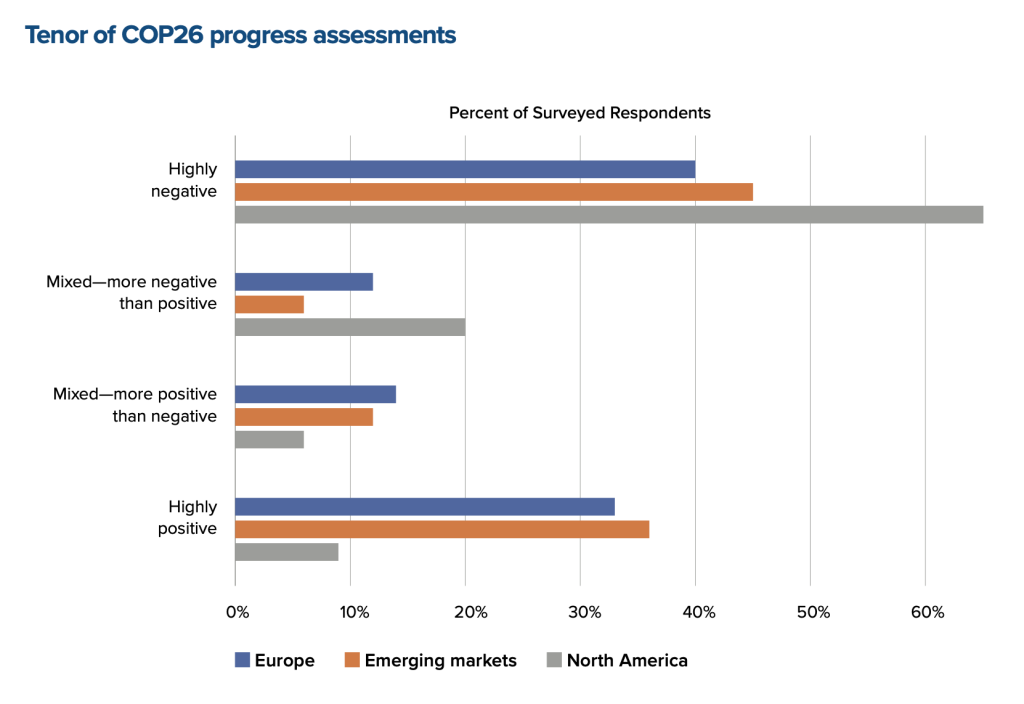
Recognizing the challenges and opportunities ahead, the 2023 Global Energy Agenda survey asked all respondents to describe, in their own words, the key barrier to reaching net-zero emissions. To aid analysis, our team coded each reply into six categories: political will/other political priorities; popular attitudes; cost/insufficient resources; technology cannot fully deliver on future needs; entrenched interests/friction within the system; and general/practical difficulties. Because many answers reflected more than one of these concerns, percentages total greater than 100 percent. The same categories were applied last year to the identical question.

The clear message is that insufficient political will/governmental focus on the net-zero goal continues to act as a dominant barrier. Indicative of this line of thinking, one participant stressed the need to “move from lip service to actual implementation of policies that decarbonize.” Outside of political headwinds, however, respondents from developing nations diverged from their counterparts in the United States and Europe. Invoking the chorus of voices from the climate-vulnerable countries in the Global South that enabled the notion of “loss and damage” to formally enter the UNFCCC negotiations, respondents from emerging markets highlighted cost and insufficient resources as other significant challenges to achieving net-zero commitments. As one person from this group articulated, the quest for net zero will come up against “developing countries’ needs for cheap energy sources to feed and heat their populations.”
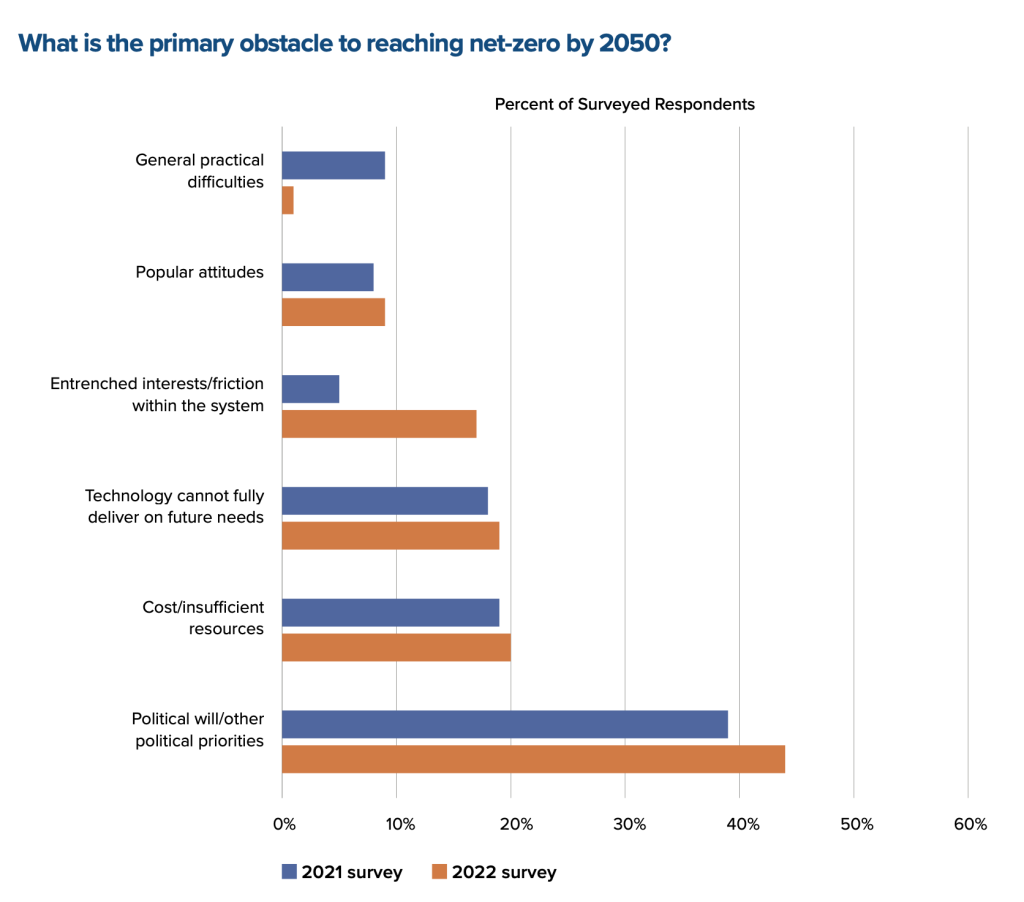
Unfortunately, optimism for achieving long-term net-zero targets echoes respondents’ views of progress in achieving COP targets to date. Indeed, the overall response to the 2022 survey on this topic is almost equally divided: 55 percent say attainment of net zero is unlikely, and respondents are evenly split on whether achieving net zero would slow economic growth. As in other sections, parsing responses by geography yielded interesting differences. Respondents from the United States were most pessimistic about reaching net zero by 2050, while those from the Middle East and North Africa (MENA) are the most optimistic.
When looking at respondents by profession, those working in government and collectively in academia, consultancy, and media hew closely to the overall sur- vey results. The big difference, almost predictably, is between renewable and nuclear energy, on the one hand, and between those in oil and gas, on the other. A surprising area of agreement is that both groups remain convinced that achieving net-zero emissions is unlikely (62 percent of oil and gas respondents, and an eyebrow-raising 73 percent of respondents from clean energy). But their views on the economics of the transition differ substantially. Of those in the renewable and nuclear energy sectors, roughly seven in ten think that the shift will not create adverse economic effects, while roughly the same proportion of those in oil and gas say the opposite.
While only time will lend credence to how the economy will affect midcentury goals, anticipating that respondents would have strong perspectives on the global economic outlook in a year defined by unrelenting inflation, the 2022 survey sought insights on which economic risk would most likely slow the energy transition. Survey participants indicate a range of risks, with no single one standing out as an obvious top concern. Most frequently mentioned is a possible recession (28 percent of respondents), while 19 percent say that inflation is a bigger concern. Central bank responses to inflation, which could exacerbate that problem or drive further recession, come in at 10 percent. These three—which collectively worry a majority of those surveyed—are not mutually exclusive; in June 2022, the World Bank highlighted the rising risk of stagflation.31World Bank, Global Economic Prospects (Washington: World Bank, June 2022), https://www.worldbank.org/en/publication/global-economic-prospects.
A closer look at the data reveals that Europeans are more concerned than others about a recession and far less about inflation. Respondents from the United States are almost evenly split over the two risks and also more likely to cite concern about the Federal Reserve response. Respondents in emerging market countries are almost as worried as Europeans about recession and as worried as Americans about inflation, but they see central banks as either unlikely or unable to exacerbate problems. Nearly a quarter of those surveyed from emerging market countries, however, are also more likely than other respondents to call insufficient government spending the top risk, a perspective that is consistent with emerging-market views on barriers to achieving net-zero emissions where costs feature heavily.
In an unusual result, a fifth of respondents answered “none of the above” to the question about potential economic barriers to the energy transition. For insight into this result, participants’ responses to related questions suggest that other factors, such as the lack of political will and the inability of technology to deliver net-zero emissions, could account for respondents’ decisions not to select an economic risk. While skepticism persists on whether the world can fully deliver on net-zero goals, without technology there will be no energy transition. To have its greatest impact, technology requires investment to develop, improve, and deploy new and existing low-carbon energy solutions. Two years ago, our survey asked which new fuel technologies would see the biggest rise in investment in 2021. This year, we posed the same question.
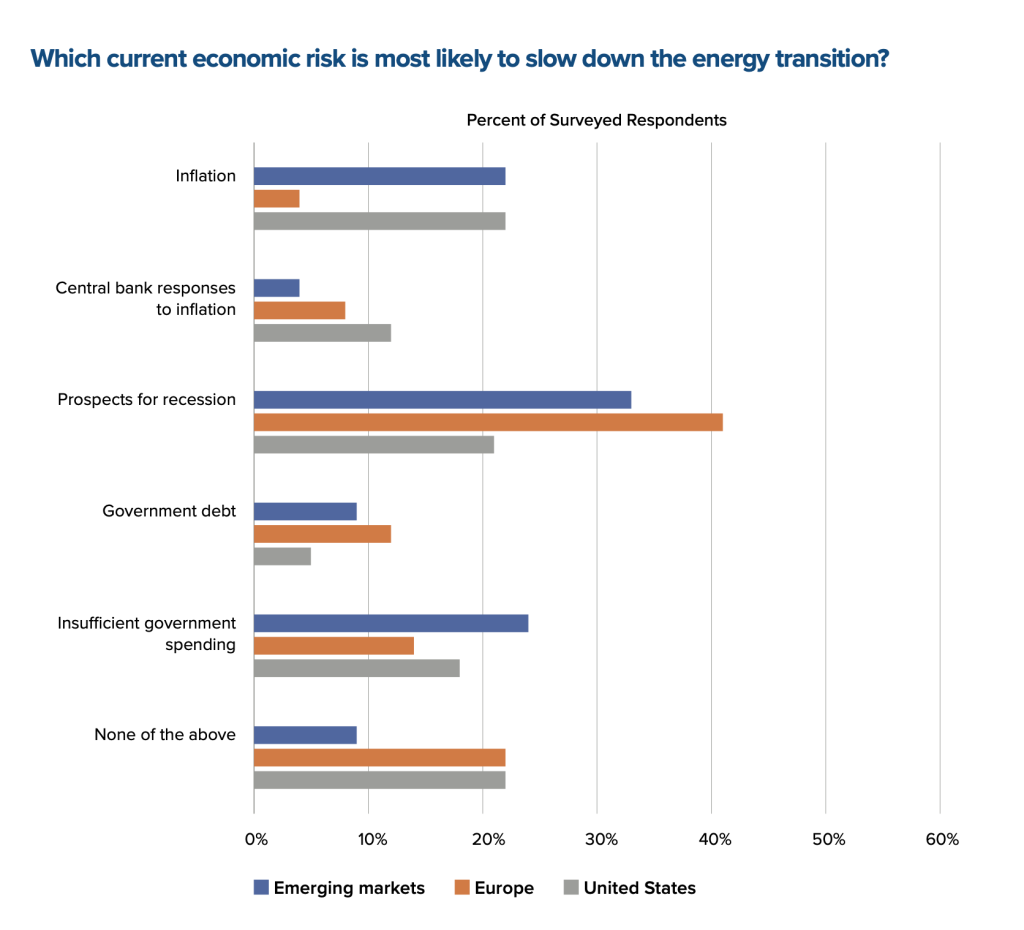
Fewer respondents this year chose hydrogen and energy storage than last year, although they still are the most common options. The biggest anticipated investment increase over last year’s responses is in advanced nuclear. Last year, it ranked seventh; this year, it is tied for third with solar power. A renewed interest in nuclear energy is consistent with the International Atomic Energy Agency’s high case projections (which are ambitious but plausible) that that global nuclear capacity could more than double by 2050.32International Atomic Energy Agency, Energy, Electricity and Nuclear Power Estimates for the Period up to 2050, Reference Data Series No. 1, Edition 2022 (Vienna: International Atomic Energy Agency, 2022), https://www-pub.iaea.org/MTCD/Publications/PDF/RDS-1-42_web.pdf.
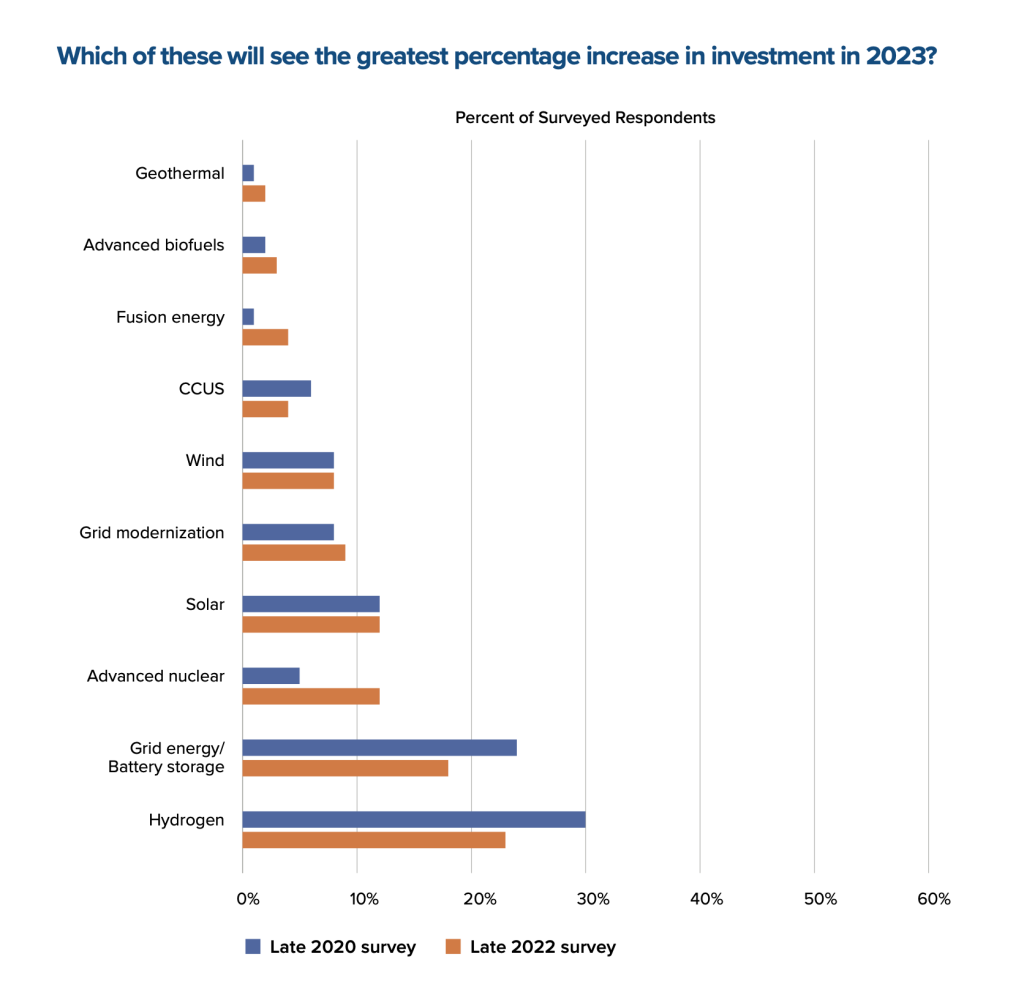
Fields of employment show greater variances on the question of clean energy investment. Of those in oil and gas, 17 percent say that carbon capture, utilization, and storage (CCUS) will see the greatest increase in investment. Indeed, more than half of those giving this response in the overall survey are from the industry. Similarly, 34 percent of the clean energy group—the largest segment of whom work in nuclear power—opted for advanced nuclear, choosing it ahead of hydrogen. Interestingly, only 8 percent of observers and commentators from think tanks, consultancies, and media name advanced nuclear as the area likely to see the most growth. Once again, energy producers and industry watchers hold divergent views.
The lack of a clear favorite for clean energy investment is perhaps an indication that governments and private industry are applying an all-of-the-above strategy to address both the energy crisis and transition. As our authors in this chapter propose, however, what’s still needed is greater international trust and collaboration on an equitable transition that takes into account not just energy access, but also its relationship to food, water, and larger societal impacts.
Leadership insight
The year of COP28: Climate action requires financial empowerment and collaboration
By H.H. Sheikha Shamma bint Sultan bin Khalifa Al Nahyan
Climate change is impacting everything from our economies, to our cities and societies, and even geopolitics.
National emergencies such as wars, droughts, and floods have prompted near-term action to mitigate the immediate problem, while long-term food shortages, rampant malnutrition, disease, and other human crises have resulted in the donation of funds and resources to end suffering. This is human nature, and we are inclined to react to such tragedies that affect our fellow humans. However, the images of entire forests being felled, bees disappearing, and the loss of underwater flora and fauna do not necessarily invoke the same emotional or financial response. It seems we have forgotten that we, as human beings, are an integral part of the natural world.
We must, therefore, understand—and perhaps remind ourselves of—the underlying connectivity that environmental degradation has on this array of issues, our social fabric, and, indeed, our very future. We must recognize that we depend highly on our local environments and habitats, often much more than we initially comprehended, or appreciated.
According to the World Health Organization, climate change is expected to cause approximately 250,000 additional deaths per year, between 2030 and 2050, from heat exposure in elderly populations, diarrhea, malaria, and chronic childhood undernutrition.33Susanne Andreae, “Climate Change and Global Health: What Actions are Healthcare Leaders Taking?” World Economic Forum, November 8, 2022, https://www.weforum.org/agenda/2022/11/climate-change-global-health-actions-healthcare-leaders/.
Research by the Massachusetts Institute of Technology found the Middle East will be uninhabitable by 2100 if climate change is not addressed.34Jacob Powell, “Climate Change May Make Middle East and North Africa Uninhabitable,” Middle East Eye, June 29, 2017, https://www.middleeasteye.net/news/climate-change-may-make-middle-east-and-north-africa-uninhabitable.
While these predictions may seem imminent, we have an opportunity ahead of us to take action today. It is crucial that we use the year of COP28 to focus on global decarbonization, unlock financial tools for the energy transition, and work for an equitable energy transition.
Decarbonization challenges
Decarbonization is a mammoth task that countries need to grapple with. In 2022, we witnessed just how unprepared our world is, as we face a global energy crisis. Over the years, there have been many promises from nations to invest in the Global South, with not enough being done to support their energy transition. This is partly due to a lack of criteria on where to invest and deploy funds where they are needed.
As much as there are challenges, the present global scenario means we can approach and utilize finance innovation in a very different way. What we need are proper mechanisms in place to finance the journey of decarbonization globally.
We cannot look at decarbonization through a single lens; but rather, we need to take a multidimensional view that includes social, geopolitical, and environmental considerations.
One way for us to unlock these financial mechanisms is by providing early-stage funding for emerging climate solutions and their commercialization. Philanthropists are well-positioned to help find solutions to issues resulting from climate change at a greater scale, thus enabling these platforms to become affordable and readily accessible. Eventually, these solutions have the potential to become more economical than less climate-friendly options, as we have seen occur with solar, wind, and other clean energy sources, thereby becoming the mainstream.
Another area that has been overlooked is human resources; in particular, the ideas, abilities, and efforts of women. In the United States, only 2.4 percent of venture capital funding goes to female founded start-ups, highlighting the distinct imbalance in where capital is funnelled. As the founder of a number of sustainability ventures, I have seen, first-hand, the power of women in government, business, and my field of expertise, sustainable development. If we could attract venture capital and other financing mechanisms to support women, I believe we would witness a paradigm shift.
The road to COP 28
At the heart of tackling climate change is an important word: “collaboration.” We have a long road ahead of us, and one that cannot be travelled alone. This only way to create true impact is for us to interconnect and make a conscious effort to move away from working in silos.
Progress will only be achieved by enabling and energizing an ecosystem that actively participates in realizing one shared vision. I founded the UAE Independent Climate Change Accelerators (UICCA) to be the nucleus that will bring this ecosystem to life, providing advice and recommendations to stakeholders on positive climate action that will facilitate the transition to a green economy. By leveraging innovation with technology and actively engage with the private sector, our aim is to harness a cohesive and integrated way forward. By doing so, we can look beyond our national borders and look to the geographies that need our attention the most. As a matter of urgency, we must prioritize the Global South, as these countries are already experiencing the damaging effects of climate change now, despite the region’s negligible contribution to its cause.
COP28 presents an unparalleled opportunity to break down silos, invest in global climate solutions, and ensure a sustainable energy transition. It is now up to us to leverage the full potential of this opportunity, as we work toward building a greener and more secure future for all.
H.H. Sheikha Shamma bint Sultan bin Khalifa Al Nahyan is the president and chief executive officer of the UAE Independent Climate Change Accelerators. She is also chief executive officer of Alliances for Global Sustainability, co-founder of Aurora50, founder of RESET MENA, and founder of the Sheikha Shamma bint Sultan Sustainability Initiatives.
Leadership insight
To travel the net-zero path, we must rethink international cooperation
By Francesco La Camera
Ending global fossil fuel dependency is a daunting task. The moderate outcome of COP27 is a clear expression of competing priorities and the conflict of interest that countries face in responding to the immediate struggles of energy security, the abundantly evident impacts of climate change, and the shrinking timeline to 2030 by which the Sustainable Development agenda needs to be realized. But knowing and acting are two different things.
How does the world accelerate progress? And ensure net-zero pledges are implemented on the ground?
As the International Renewable Energy Agency’s (IRENA) World Energy Transitions Outlook states, anything short of a radical and immediate energy transition action will defeat our chances of reaching a climate-safe 1.5 degrees Celsius. IRENA sees efficiency and electrification as primary drivers, enabled by renewable power, green hydrogen, and sustainable modern bio-energy. The world must push for renewables as multiplier solutions, available today for a rapid scale-up.
Today, renewables are cost-effective. IRENA estimates that the new renewable capacity added in 2021 could have reduced electricity generation costs in 2022 by at least $55 billion. This is a compelling fact amid concerns around energy prices and the security of supply. Net zero means tripling the annual deployment of renewable power between now and 2030. The technology solutions to take us to 2030 already exist. The immediate next steps need a holistic policy framework and finance at scale to ensure these technologies are deployed strategically and worldwide.
I believe that only through solid partnerships and international cooperation can world governments effectively contribute to the global net-zero ambition and keep development high on the agenda. A new multilateral compact among nations, global finance, and the private sector is needed to deliver systemic change and advance the renewable-centered energy system with opportunities for developed and developing countries alike. Doing this means reimagining the way international cooperation works.
It is evident that energy supply—power in particular—is shifting toward renewables. But the demand side must also change. It requires an end to our ceaseless hunger for new fossil fuels that perpetuate the risks of climate change and threatens to leave behind those who do not have access to modern technologies and finance. IRENA’s Outlook sees investment needs of $5.7 trillion per year until 2030. Hence, investment decisions taken today, particularly the long-lived ones, must be climate-proofed.
Eighty percent of the global population lives in countries that are net importers of fossil fuels. By contrast, renewables are available everywhere, offering a way out of import dependency, decoupling economies from the costs of fossil fuels, and driving energy security, new industrial value chains, and jobs.
A successful transition, however, not only depends on strategies that grow renewables worldwide. We need a new system that is built on the corresponding infrastructure—physical, regulatory, and institutional. This will require all hands on deck to reimagine the system of the future, forge new partnerships, build the interconnectors that link supply and demand, and share know-how to accelerate the global learning curve.
Hydrogen is a good example. IRENA has been at the leading edge of knowledge about hydrogen for many years now. Collaboration is of paramount importance to accelerate the production, delivery, and use of green hydrogen. This will not work without greater connectivity. Countries and industry must collaborate to develop common frameworks to ramp up global hydrogen markets and build trade routes through shipping and port infrastructure to transport hydrogen and its derivatives such as green ammonia.
What the world achieves in the coming few years defines whether its leaders live up to the promise made to the peoples of the world: nobody will be left behind in a climate-safe world. For the energy transition to be fair and equitable, investments must be directed to countries that have not been able to attract investments. A shift to renewables holds a huge potential particularly for Africa, where the GDP could be 6.4 percent higher compared to current policies, enabling a truly green deal for the continent. Only 2 percent of global investments in renewables in the last two decades were made in Africa, with significant regional disparities. This must change. Developing countries need resources to build infrastructure. They need the know-how to develop enabling policies and the human capacity to play their part in the global energy sector’s transformation. Multilateral banks and international financial institutions must not only scale up their green investment portfolios, but also operationalize financing to adequately address capacity and infrastructure gaps with greater results including private capital mobilization.
This is particularly acute in view of rising financial costs associated with loss and damage for developing countries, resulting in a growing debt burden to adapt to climate change impacts.
We understand where the problems lie, we have the solutions, but a fresh look is needed to deliver new approaches and strategies. IRENA’s Assembly in January 2023, which gathers energy leaders from its global membership and partners in Abu Dhabi, will be the first milestone on the global agenda to identify energy transition priorities in preparation for the UAE-hosted COP28 later this year.
Transforming the energy system is an urgent and difficult task. It requires farsighted choices, discipline, and wise investments. Above all, it requires the world to deliver radical action and extraordinary levels of international cooperation. If we don’t put the pieces of the puzzle together, we risk catastrophic failure.
Francesco La Camera is the director-general of the International Renewable Energy Agency (IRENA).
Leadership insight
The nexus between climate, water, food, and energy
By H.E. Yasmine Fouad
The term “nexus” is commonly used to portray interactions between water, food, climate, and energy.35Chirisa, I., Bandauko, E. “African Cities and the Water-Food-Climate-Energy Nexus: an Agenda for Sustainability and Resilience at a Local Level.” Urban Forum 26, 391–404 (2015). Each aspect within the nexus either contributes to the production of another or impacts its existence.36Abbass, R.A., Kumar, P., and El-Gendy, A., 2018. “An overview of monitoring and reduction strategies for health and climate change related emissions in the Middle East and North Africa region.” Atmospheric Environment, 175, 33–43. In the 2013 UN General Assembly, the inter-linkages between water and energy sectors in framing the post-2015 development agenda were highlighted.37Kumar, P., Saroj, D.P., 2014. “Water–energy–pollution nexus for growing cities.” Urban Clim. 10, 846–853. Water needed for energy extraction and processing accounts for 2 percent of the sustainable supply in the Middle East and North Africa (MENA), while water abstraction, desalination, and waste-water treatment constitute energy-intensive processes.38Damerau, K., van Vliet, O.P.R., Patt, A.G., 2015. “Direct impacts of alternative energy scenarios on water demand in the Middle East and North Africa.” Clim. Change 130, 171–183; Siddiqi, A., Anadon, L.D., 2011. The water–energy nexus in Middle East and North Africa. Energy Policy 39, 4529–4540. Food is the third pillar for human survival where agriculture is the largest consumer of the world’s freshwater resources. Ultimately, energy, water, and food all impact and are impacted by climate change. I would argue that the famous nexus, commonly referred to WEF (water-energy-food), needs to be rebranded as C-WEF (climate-water-energy-food).
Unfortunately, choices related to management and use of energy, land, and water are taken in isolation and without adequate consideration of the inter-sectoral implications. C-WEF nexus is imperative in devising an integrated framework that would allow for effective monitoring, legislative and control systems.39“African Cities and the Water-Food-Climate-Energy Nexus.”
Transforming the conventional processes of production and consumption of water, food, and energy is at the heart of climate action. Demand for all three is increasing rapidly. As conventional oil reservoirs in the MENA region get depleted, extraction methods shift to more water-intensive technologies.40“Direct impacts of alternative energy scenarios on water demand.”
Even with improved efficiency alongside a transition to renewable energy sources, water consumption for energy is expected to double by the end of the century.41Ibid.
Furthermore, the demand for electricity is expected to more than triple between 2005 and 2050, and without the adoption of end-user efficiency for water applications, electricity demand will increase by a factor of 5.6.42Dubreuil, A., Assoumou, E., Bouckaert, S., Selosse, S., Maïzi, N., 2013. Water modeling in an energy optimization framework – the water-scarce Middle East context. Appl. Energy 101, 268–279.
Water extraction, treatment, and production, as well as end-user and commercial consumption, are energy-intensive processes, making energy and water conservation strategies top priorities. To address growing water demand, renewable energy technologies to extract water, such as solar water-pumping, are implemented in Egypt. In turn, improved water conservation practices can save electricity. A study showed that under a water-saving scenario, 22 percent of electricity could be saved in 2050.43“Direct impacts of alternative energy scenarios on water demand.” Employing climate smart agriculture, for example, would result in considerable energy savings. Hence, to withstand current and future pressures, governments must ensure integrated and sustainable management through a C-WEF nexus to balance the needs of people, nature, and the economy.
While achieving net-zero emissions by the middle of this century is critical to limiting climate change, this alone is simply not enough. We must ensure that the clean energy systems are equally available to everyone in the world and that everyone has access to reliable energy that provides a decent quality of life.44“Water-food-energy-ecosystem nexus,” United Nations Economic Commission for Europe, updated December 22, 2022, https://unece.org/environment-policy/water/areas-work-convention/water-food-energy-ecosystem-nexus#accordion. Meeting this urgent and massive challenge requires an ambitious, pragmatic, and multi-pronged approach. Because of this nexus’ crucial role in many sustainable development goals (SDGs), decision-makers in all three domains must cooperate and coordinate climate action in an integrative approach.45“Water, Food, and Energy,” United Nations, last visited December 30, 2022, https://www.unwater.org/water-facts/water-food-and-energy#:~:text=Water%2C%20food%20and%20energy%20form,all%20three%20is%20increasing%20rapidly. Developing countries need to hold on to their rights in access to finance and to call for just energy transition pathways that are realistic. It means that both financial and technical support are needed to ensure that new energies are successfully deployed, integrated, and consumed in developing countries.

As one of the most vulnerable countries to climate change, Egypt is taking a leading role toward combatting the global crisis, as it adopts an integrated approach highlighting the C-WEF nexus. The WEF Nexus index value for Egypt is 53.1, placing the nation in the 125th position out of 181 countries for WEF security.46“Egypt in 2021,” WEF Nexus Index, last visited December 30, 2022, https://wefnexusindex.org/EGY/. As we adopt the COP27 priority of “Together for Implementation,” we have set an ambitious national program called the Nexus of Water, Food and Energy (NWFE). NWFE package is our flagship bundle of nine projects that reflects a Green Transition for Sustainable Livelihoods built on the nexus that hits all Paris agreement targets, while ensuring human development through touching on SDGs. Hence, NWFE is an implementable and replicable example for the C-WEF nexus approach when human needs are at the heart of climate action.
H.E. Yasmine Fouad is minister of environment of the Arab Republic of Egypt
Leadership insight
Just energy transition for Africa
By Kevin Kariuki
I foresee an African just energy transition that is anchored on the continent’s vast renewable energy sources as well as grid interconnections of intra- and inter-regional power systems, complemented by natural gas as a transition fuel, pending the development of cost-effective green hydrogen and affordable energy storage systems and other clean sources of flexible generation. Moreover, the transition must be facilitated by adequate financial resources as well as technical capacity to efficiently develop, operate, and maintain the emerging technological solutions.
The transition must, however, also proceed in the context of synergizing climate action and socioeconomic development agenda, including increasing access to quality electricity supply and providing access to clean cooking.
This context is vital, given that in 2021, nearly half of all Africans did not have access to electricity while a billion people did not have access to clean cooking.47“Africa Energy Outlook 2022,” International Energy Agency, June 2022, https://iea.blob.core.windows.net/assets/6fa5a6c0-ca73-4a7f-a243-fb5e83ecfb94/AfricaEnergyOutlook2022.pdf. At the current rates of investment in energy systems on the continent, Africa will thus not achieve affordable, reliable, sustainable, and modern energy for all, as encapsulated by SDG7, a UN Sustainable Development Goal.48IEA, IRENA, UNSD, World Bank, WHO, “Tracking SDG7: The Energy Progress Report,” The World Bank, 2022, https://trackingsdg7.esmap.org/.
Also, at 500 kWh—and even lower in Sub-Saharan Africa—the per capita electricity consumption across the continent remains a tiny fraction of consumption levels in developed countries. Africa’s just energy transition must focus on addressing the continent’s energy poverty.
However, one size does not fit all. There are some countries that have carbon-intensive economies, while others produce minimal greenhouse gas emissions. South Africa and Egypt, for example, contribute 1.17 percent and 0.67 percent of global carbon dioxide emissions respectively from fossil fuels and industry, whereas most other African countries, especially in Sub-Saharan Africa, such as Ethiopia, Zambia, and Mali, hardly contribute anything toward the continent’s current 4 percent of global greenhouse gas emissions. Approaches to the transition must therefore be specific to a region and country.
Thus, while the few African countries with higher carbon intensities and near-universal access to modern energy must focus on decarbonization, most countries on the continent will concentrate on increasing access to quality electricity supply and providing access to clean cooking for the billion Africans who rely on wood- or charcoal-burning fires for cooking.
Thankfully, Africa is endowed with abundant renewable energy sources, that remain largely untapped. These must be harnessed to anchor low-carbon development pathway. At the same time, the security of the continent’s energy supply must remain sacrosanct, the socioeconomic impacts of the energy transition must be addressed, and the achievement of sustainable development goals related to energy as well as the African Union’s Agenda 2063 must be guaranteed.
These aspects must inform the transition, which is also predicated on (i) access to adequate financial resources, (ii) the availability of cost-effective technologies, and (iii) the technical capacity of the countries to efficiently develop, operate and maintain emerging technological solutions. It is not simply a matter of Africa “leap-frogging” fossil fuels as the often-quoted cliché suggests.
Availing African countries with adequate concessional financing in a timely manner will enhance their trust in developed economies, thereby strengthening confidence in, and sustainability of, Just Energy Transition Partnerships (JETPs) and other transition plans. In my mind, Special Drawing Rights are an ideal way to finance the Africa’s JETPs and climate action in general.
To further embed a low-carbon trajectory, it will be necessary to accelerate the development of (i) cost-effective green hydrogen as an alternative to fossil fuels in power production and as feedstock for harder-to-abate sectors such as steel, cement, and long-haul transport, and (ii) affordable energy storage systems and other clean flexible generation. Meanwhile, the capacity of African countries to efficiently develop, operate and maintain the emerging technological solutions must be strengthened.
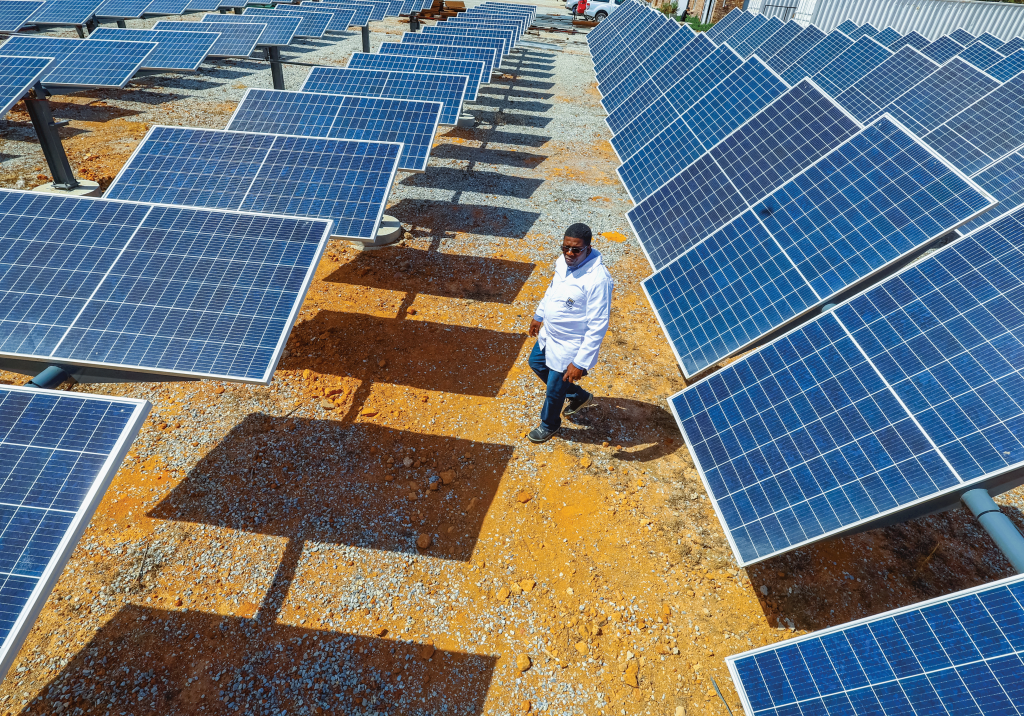
The foregoing will also determine the speed of Africa’s energy transition and, therefore, the continent’s ability to complement global ambitions toward the attainment of the Paris Agreement goal of limiting the increase in global average temperature to 1.5 degrees Celsius.
Energy transition is not a step-function. Instead, the energy mixes characterizing Africa’s just energy transition will evolve with time, depending on access to the drivers mentioned above and the speed at which viable cleaner energy alternatives are developed. Hence, in line with the Paris Agreement, the African Development Bank intends to continue to strategically support Africa’s natural gas sector, to facilitate the transition to clean energy, and to promote climate adaptation and resilience. This approach recognizes that, in addition to grid interconnections, gas is an important enabler for increased integration of renewables in the energy mix, as its flexible generation readily compensates for loss of solar and wind generation in case of sudden weather changes. It also supports the use of natural gas to increase access to clean cooking and the health benefits thereof.
Moreover, there is a remaining carbon budget of 400 gigatons of CO2 equivalent emissions compliant with the 1.5-degrees Celsius goal. This budget should be allocated in inverse proportionality to the historical emissions of regions, thus enhancing the fairness of the energy transition from a global perspective, while enabling increased renewable energy penetration in developing countries, which have contributed the least to historical emissions. This principle is enshrined in the Paris Agreement.
In this regard, who would begrudge tiny Gabon if it exploited its gas to boost its baseload power generation, increase access to electricity, and provide a source of clean cooking while continuing to absorb almost a third of France’s annual total greenhouse gas emissions? On the same token, would it not be beneficial if Tanzania used its natural gas to increase its population’s access to clean cooking from the current 4 percent, while reducing emissions from use of biomass or charcoal and curbing deforestation? Also, why shouldn’t South Africa use its new gas finds or imports from Mozambique to safeguard its security of supply by converting its newer coal plants to run on gas—thereby reducing emissions by about 40 percent in the medium to long term, pending development of cost-competitive green hydrogen?
To answer these questions, what is required is a holistic, honest, and pragmatic consideration of the energy quadrilemma, i.e., the need to find balance between energy reliability, affordability, and sustainability, as well as its impact on the social dimensions of energy. This approach is tantamount to synergizing climate action and socio- economic development and is key to a just energy transition.
In the meantime, developed nations must simply reduce greenhouse gas emissions.
Kevin Kariuki is the vice president for Power, Energy, Climate and Green Growth at the African Development Bank.
Leadership insight
For a just energy transition, a new approach to mining is critical
By Adam Matthews
The global energy transition is unquestionably gathering pace, but one particular emerging constraint has the potential not only to disrupt the transition, but to also cause significant conflict: the role of the mining sector to meet the demand for minerals. This is not just a challenge of being able to extract more from the ground, but also of the industry’s ability to address the range of issues that continually call into question the sector’s social license. A new approach is needed, and one is beginning to take shape.
Put simply, without critical minerals and metals for batteries and a host of other transition infrastructure, we will not limit warming to 2 degrees Celsius, let alone 1.5. Even with much greater recycling, substitution of products, innovation, and efficiency, the increased demand will require both more greenfield mining and the expansion or extensions of existing operations.

Scale of the demand challenge
The World Bank has estimated that production of some key critical minerals could skyrocket by nearly 500 percent by 2050 under a 2-degree scenario to meet demand for low-carbon technologies.49“Climate-Smart Mining: Minerals for Climate Action,” The World Bank, last visited December 27, 2022, https://www.worldbank.org/en/topic/extractiveindustries/brief/climate-smart-mining-minerals-for-climate-action. To keep to 1.5 degrees would put even more formidable demand on the mining industry, with wind, solar, and electric vehicle (EV) technologies together representing a massive emissions reduction potential at low cost, but carrying huge mineral dependencies.50“Climate Change 2022: Mitigation of Climate Change,” Intergovernmental Panel on Climate Change, April 4, 2022, https://www.ipcc.ch/report/sixth-assessment-report-working-group-3/. There are increasing warnings of a looming disconnect between mineral supply and climate ambition. Earlier this year, S&P Global signalled that the world could face a historic copper deficit by 2035, and the World Economic Forum warned of lithium shortages in just three years’ time. Supply is also easily affected by faulty waste management practices, as demonstrated by the recent production pause at a Tesla-backed nickel mine due to a leak at a waste (tailings) dam.51Nick Lazzaro, “World Copper Deficit Could Hit Record; Demand Seen Doubling by 2035: S&P Global,” S&P Global, July 14, 2022, https://www.spglobal.com/commodityinsights/en/market-insights/latest-news/energy-transition/071422-world-copper-deficit-could-hit-record-demand-seen-doubling-by-2035-s-p-global; Ian Shine, “The World Needs 2 Billion Electric Vehicles to get to Net Zero. But is there Enough Lithium to Make all the Batteries?” World Economic Forum, July 20, 2022, https://www.weforum.org/agenda/2022/07/electric-vehicles-world-enough-lithium-resources/. Part of the challenge is a lack of investment in supply chains. An injection of $42 billion is needed in lithium alone if it is to meet 2030 demand, while $325 billion is needed to plug a potential 16 million metric ton copper shortfall by 2040.52“Analysis: Lithium Industry Needs $42 Billion to Meet 2030 Demand,” Benchmark Minerals, May 13, 2022, https://source.benchmarkminerals.com/article/analysis-lithium-industry-needs-42-billion-to-meet-2030-demand; Julian Kettle, “Will a Lack of Supply Growth Come Back to Bite the Copper Industry?” Wood Mackenzie, March 23, 2021, https://www.woodmac.com/news/opinion/will-a-lack-of-supply-growth-come-back-to-bite-the-copper-industry/. The investment gap is particularly acute upstream, leaving downstream players without raw material supply—already, in 2022, the global anode pipeline capacity has doubled, but cannot access the necessary raw graphite feedstock. With greenfield mines taking an average of six- teen years to become fully operational according to the International Energy Agency (IEA) (although some estimates are shorter), a lack of investment now could result in huge production gaps further down the line.
Some governments in the West have also been very late to respond to the concentration of mineral processing in China. Mineral security is rising up the political agenda and western governments are playing catch-up against a multi-decade strategy that has positioned China at the heart of many mineral-based value chains. This is leading to dramatic interventions, such as Canada’s instruction to Chinese owners to sell their shares in what the government has perceived as three critically important mining companies.
Mining’s social license to operate
It is not just financial investment that is lacking. Questions about avoiding societal and cultural harm need answers. Will society at large continue to accept electric vehicles made on the backs of child labor, from minerals from conflict zones, or in a manner that creates huge tailings (mining waste) dams that can collapse? Will we accept the development or expansion of mines that result in the destruction of 46,000-year-old heritage sites, as happened in Australia a couple of years ago, or that conflict with indigenous or First Nation communities, or that result in the loss of biodiversity? Add to this other challenges such as the benefits of automation that can increase efficiency and improve safety but potentially challenge the relationship of mines in their host communities if jobs are lost. The closure of mining courses and colleges also calls into question if the future pipeline of engineers has been invested in as an industry-wide priority, and we are only beginning to understand the realities of the change needed in some mining operation workplace cultures.
While there is unquestionably good practice in a number of mining companies and in a new emerging generation of mining leaders, when taken as a sector as a whole, the record of addressing systemic challenges is wanting. The challenge is, when something goes wrong in mining, society at large and increasingly those invested in it through their pension funds do not differentiate between companies, and the sector as a whole is tarred with the same brush.
It should also be noted that those that demand the products of mining have failed to align behind best practice standards to incentivize the scale of shift needed across the sector. This will be even more critical to give mining companies the confidence that their investment in driving best practice will not price them out of the market.
Investors have long remained silent observers and failed to see the interconnection between this sector and every other they are invested in. Too often the solution is to exclude and exit the sector when what is called for is a long-term investment in driving genuine real-world change. Running away from the sector as an investor is easy, but irresponsible.
A different approach
With energy transition plans hinging on global capacity to scale up low-carbon infrastructure, and with many resource-rich nations hoping their mineral resources will be a lever for development and a just transition, investors, governments, and companies need to rethink how mining will play the role it needs to.
Therefore, to meet future mineral demand, we will require a very different approach that demands zero harm to people and the environment. The nature of that approach could be grounded in the intervention that institutional investors are continuing to lead, working together with industry and the United Nations, and informed by the voices of impacted communities, following the horrific disaster that killed 270 people when a tailings dam collapsed in Brumadinho, Brazil.
Following this tragedy, investors intervened. They were no longer willing to only engage individual companies involved in the disaster, but they drove a sector-wide response. This has led to the creation of the first Global Tailings Standard—endorsed by seventy-eight mining companies representing over 70 percent of market capitalization—entailing the public disclosure of key information about the dams companies have and the standards they heed. An additional vital piece of the puzzle will shortly be added with the creation of a Global Tailings Institute that will ensure independent audits are conducted to bring the standard to life. This is a long-term engagement by investors, but one that puts in place the pieces needed to address the issue and eliminate waste as an unsubstantiated risk and externality.
Based upon this approach, the lessons are clear. The need to work collaboratively to recognize challenges, identify global best practice, and align the application of standards across investors, banks, and insurers, enabled by thorough mine-site audits, is apparent.
A new bottom-up landscape can emerge. Investors will also need to work with those sectors that demand mineral resources so that they too reinforce alignment to global best practice standards. This is the basis for the Mining 2030 Investor Agenda that will be set out by investors in January.
This is not an easy path, but it is a necessary one to ensure that through collaboration and standard-setting, the mining sector is not one that has its social license continually questioned, but is instead recognized for the vital role it plays in the future we want.
Adam Matthews is the chief responsible investment officer of the Church of England Pensions Board.
Leadership insight
We can address climate change by accelerating the just energy transition
By Rajiv J. Shah
The sun was setting when I stopped by a remote village in the Indian state of Bihar.
On a typical evening, the central power grid would shut off around dusk. Market stalls would close, and darkness would fall across town.
But not on that night. I was there to see a recently installed a solar mini-grid project sponsored by The Rockefeller Foundation (the Foundation) to bring reliable electricity to an area that had never had it before. It is one of thousands of projects the Foundation has supported for more than a century to leverage science and technology to advance the well-being of humanity.
That night in Bihar, the lights kept shining, market stalls stayed open, and customers shopped. I caught a glimpse of a more sustainable and equitable future when I met Ruby Kumari, a widow, a mother of two girls, and an expert seamstress. The new electricity empowered Ruby to walk the streets more safely. It allowed her daughters to continue their education after dark. And it enabled Ruby to use her skills to build a viable business: a sewing school.
Not long after my visit to Bihar in late 2019, COVID-19 hit that region of India, as it did Beijing, Brooklyn, and everywhere in between. Today, the virus is one of many crises increasing the suffering of vulnerable people around the world: the poor, hungry, unhoused, under-educated, and infirm.
One such crisis, climate change, poses a singular threat to humanity. We must confront it directly. Fortunately, as Ruby’s experience demonstrates, there is a way to make climate action about more than just taking molecules out of the air—it can also be a vehicle for uplifting the world’s most vulnerable people. By scaling technologies like solar mini-grids, the world can finally end energy poverty, empower millions to compete in the global economy, and reduce the likelihood of a climate catastrophe.
If humanity continues with business as usual, the planet will warm by about 3 degrees Celsius. At that temperature, life for billions of people will be harsher, poorer, and more fragile. But that future is not inevitable. Humanity could come together to achieve the Paris Agreement’s goal of limiting warming to 1.5 degrees Celsius, building a world where people have the opportunity to pursue their dreams.
This is the choice facing us at the Global Energy Forum and the rest of this year’s international convenings. If we want to keep the 1.5-degree dream alive, we must do more than talk. We must put people like Ruby at the center of our efforts to mitigate and adapt to climate change.
New partnerships and new innovations can help us mobilize the capital needed to meet this challenge. The Global Energy Alliance for People and Planet (GEAPP) is one such partnership. The Alliance is a collaboration between three philanthropies—The Rockefeller Foundation, the IKEA Foundation, and the Bezos Earth Fund—as well as multilateral development banks, development finance institutions, technology providers, delivery partners, and nations themselves. Together, Alliance partners are working to accelerate just energy transitions in a dozen emerging and developing economies.
Since its inception, GEAPP has committed more than $350 million, both directly and via partners, accelerating initiatives worth many times more in value. Currently, Alliance partners are building 10,000 solar mini-grids that will power homes and businesses in Nigeria. We are supporting an innovative project to stimulate energy demand through micro-entrepreneurship in Haiti. And we are deploying small scale solar faster than ever before, driving equitable economic growth for rural businesses across India.
To scale these green technologies and avert emissions, the world must develop new means of financing. At COP27, US Special Presidential Envoy for Climate John Kerry, The Rockefeller Foundation, and the Bezos Earth Fund announced an effort to expand voluntary carbon markets: the Energy Transition Accelerator (ETA). Our intent is to start a process to design an ETA that produces verified greenhouse gas emission reductions that developing countries will have the option of issuing as marketable carbon credits. The credits could then be purchased by companies, including through advanced purchase agreements, creating a predictable finance stream to de-risk and leverage other forms of finance.
New initiatives often come with hard questions and some risks, but it is important to remember that ambition is not a bad thing. It has helped humanity address development challenges for decades, from slowing the spread of HIV/AIDS to vaccinating the world’s most vulnerable children. And decades from now, I believe we will see that the Alliance, the ETA, and other ambitious initiatives proved essential to averting 3 degrees of warming.
For more than one hundred years, The Rockefeller Foundation has been committed to doing whatever it takes—finding new ideas, taking new risks, making big bets—to address global challenges. At the Global Energy Forum this month, and at COP28 later this year, we hope to establish and strengthen partnerships that will help the world meet the most important challenge of our time.
Rajiv J. Shah is the president of The Rockefeller Foundation. From 2010 to 2015, he served as administrator of the US Agency for International Development.
Conclusion
The political and economic landscape of 2023 is vastly different than a year prior. At its core, this sentiment is captured through feedback from a dynamic community of Global Energy Agenda survey respondents. Undeniably, Russia’s invasion of Ukraine is the prevailing story of 2022, and although it has colored how individuals, companies, and countries are adapting to facets of political and economic risk that were previously thought outdated by some, it is striking that the views of the energy transition by this year’s respondents are increasingly undeterred by such near-term belligerence.
A year ago, we noted growing “ambivalence,” if not pessimism, about the outlook for the transition to an emissions-free energy system. Predictions of peak oil demand and timelines to net zero were contracting. Almost instinctively, one might assume the havoc sown by Moscow this year—chaos that has compounded stress on an energy system working to rebound from the pandemic—would serve to amplify doubts about the energy transition. However, that is not the case. The response to our survey, as 2022 was coming to a close, shows expectations of peak oil demand steadied, while hope that the world can achieve net zero accelerated.
Participants’ views on pathways to a zero-emissions future are not uniform, however. This feature is apparent in the international reach of the Global Energy Agenda and the corresponding geographical distinctions that emerged from the survey data.
Across the world, there is a consistent call for financing the energy transition, and nowhere is this more acute than in the developing world. And while the voice of the Global South was well represented at COP27, the urgency of the climate challenge means financing access to affordable and reliable clean energy cannot be left to diplomacy alone. Honest dialogue around the tangible impacts of climate change on impoverished communities throughout Africa, Latin America, and the Asia-Pacific region should remain a fixture of the UNFCCC process, but this discourse should be matched by equally impassioned efforts to deploy energy technologies that keep costs down, boost political stability, and achieve international climate goals.
It is therefore fitting that COP28 will take place in the United Arab Emirates, a country that is a major oil producer but also the Arab world’s first provider of nuclear energy and a significant advocate for renewable energy.53“Why the Gulf’s oil powers are betting on clean energy,” The Economist, December 19, 2022, https://www.economist.com/business/2022/12/19/why-the-gulfs-oil-powers-are-betting-on-clean-energy. To achieve the aims of the Paris Agreement, all segments of the global energy system must work concurrently to enhance energy security while stemming global greenhouse gas emissions. The COP28 presidency provides the UAE an opportunity to advance an inclusive energy transition that helps achieve such an approach, one that is emblematic of the country’s own diverse energy commitments. The defining aspect of the 2023 energy landscape will be whether the global community can come together to seize this opportunity.
Appendix
In what country do you live?
(Grouped by region outside North America)
Respondents to this year’s Global Energy Agenda survey form a group more global than ever, living in fifty-one countries, compared to forty-one in last year’s survey and thirty-nine in the one before that. Just over half (53 percent) are based in the United States, 20 percent in Europe, and 10 percent in the Middle East and North Africa, with the remainder spread across the rest of the Americas, Asia, Africa, and Australia.
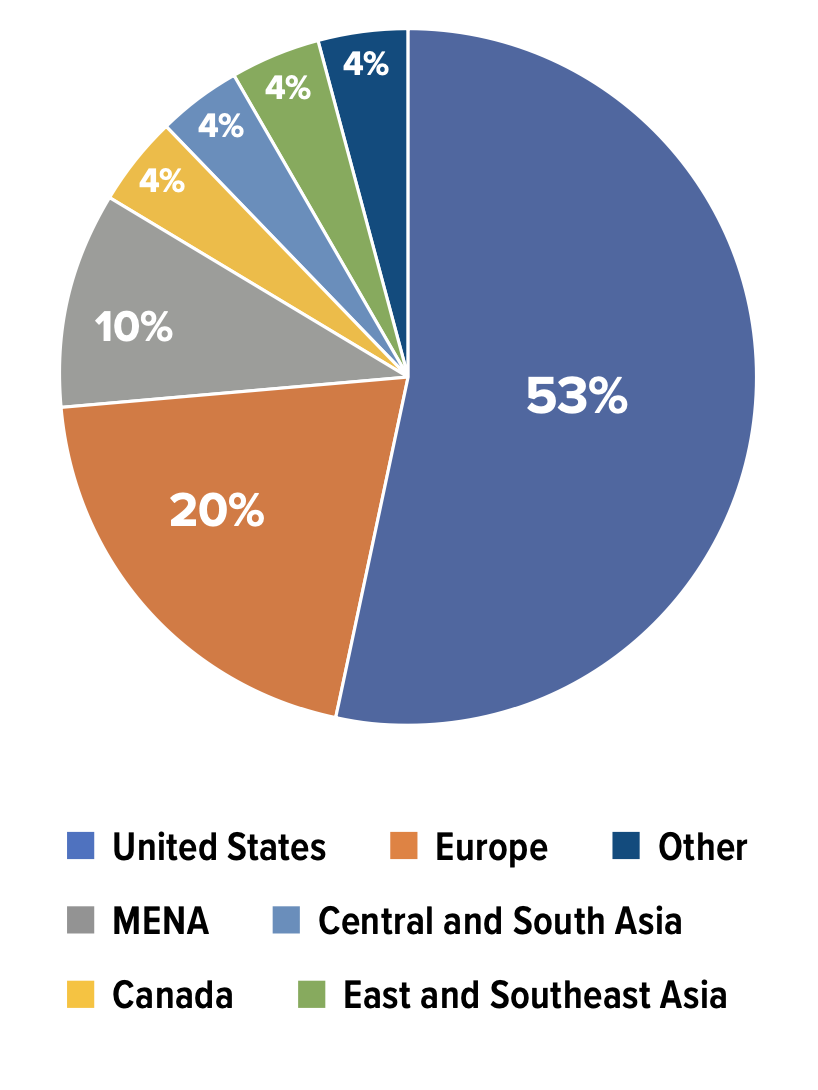
In which sector do you work?
Respondents represent various sectors, and primarily fall into four groups: 44 percent are associated with academia, think tanks, consulting, and media; 16 percent work in government; 14 per- cent are associated with low-carbon energy production, including from renewables, nuclear, and advanced energy technologies; and 13 percent are involved in the oil and gas industry.
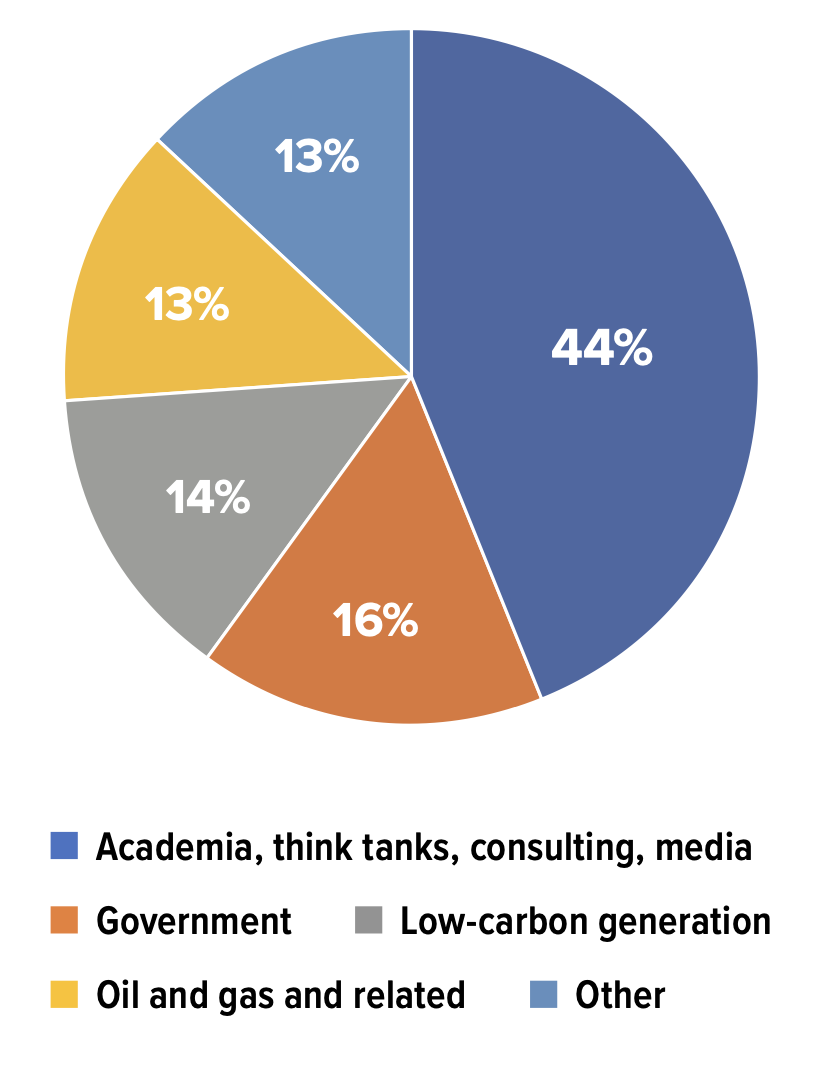
What is your age?
Respondents range from eighteen years to over seventy-five with the mean age (again) of fifty-six. Younger, middle-aged, and senior respondents do not vary significantly in their answers. As a result, respondent ages do not feature in our analysis.
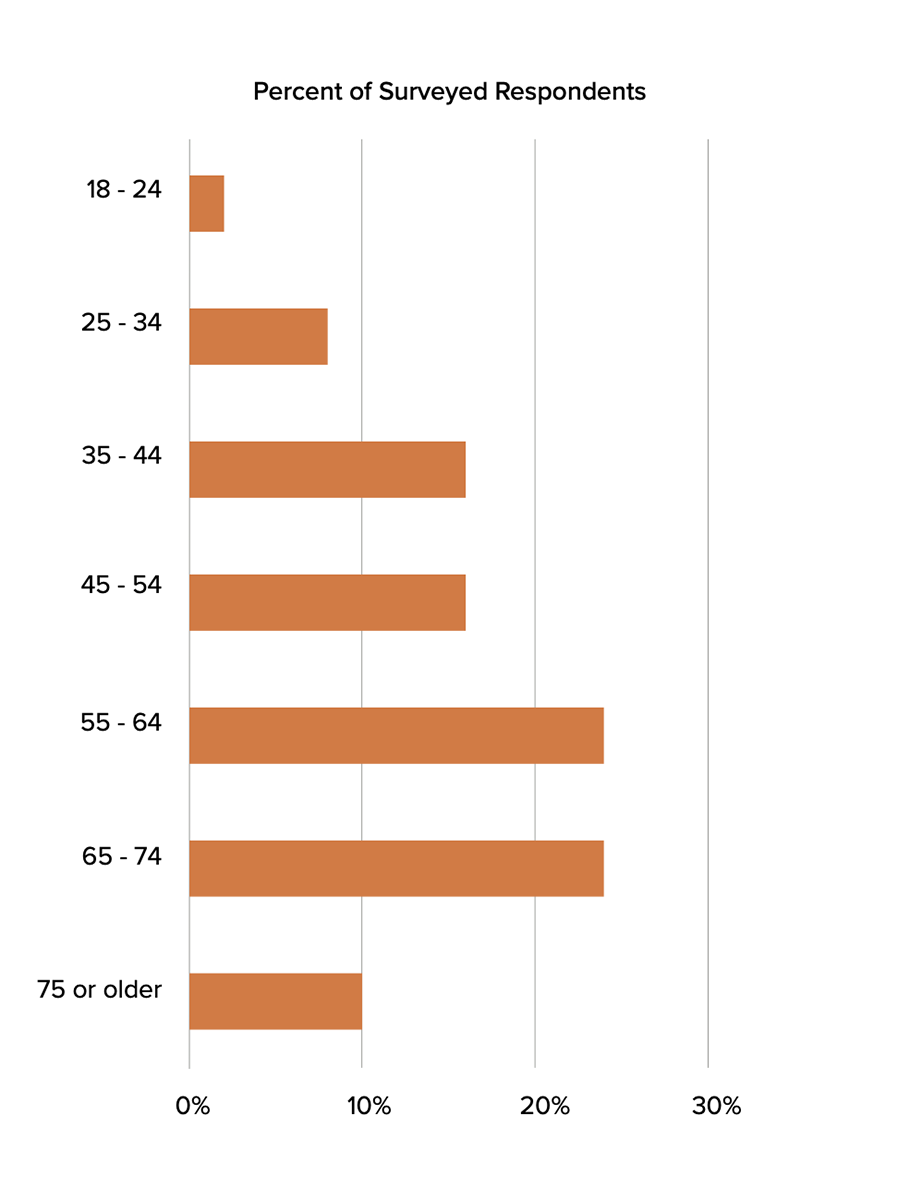
PREVIOUS GLOBAL ENERGY AGENDA
EDITORS
Landon Derentz is senior director at the Atlantic Council Global Energy Center; Christine Suh is the managing editor for the Atlantic Council Global Energy Center; Ameya Hadap is an Assistant Director for the Atlantic Council Global Energy Center; and Paul Kielstra is a freelance editor, analyst, and writer based outside of London.
sponsored by
Presenting partners

Platinum partner

Gold partners

International media partner

Silver partners

Bronze partners

Media partner

Regional broadcast partner

Institutional partner

RELATED EVENT
The Atlantic Council Global Energy Forum is the premier international gathering of government, industry, and thought leaders to set the energy agenda for the year.
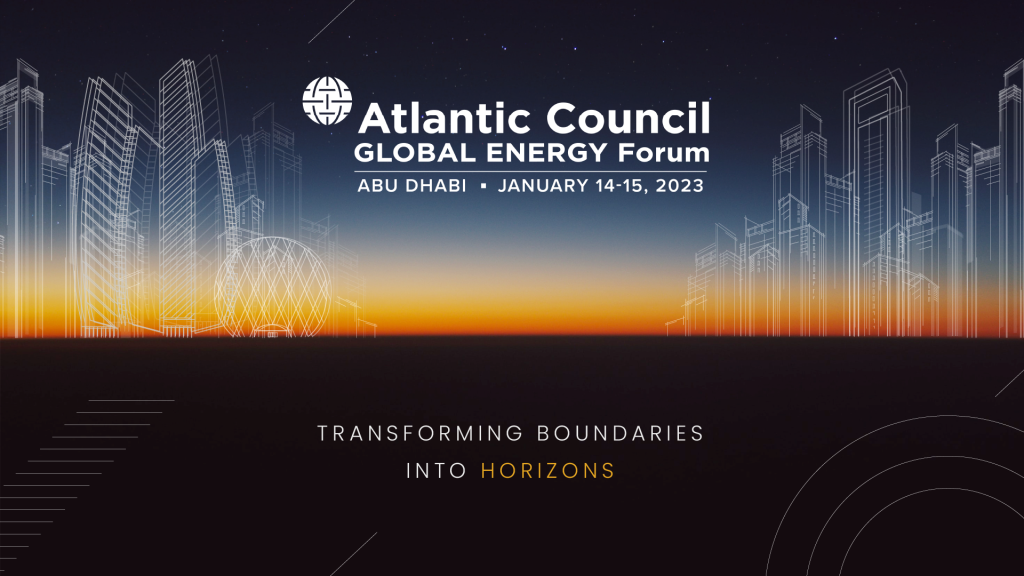

The Global Energy Center develops and promotes pragmatic and nonpartisan policy solutions designed to advance global energy security, enhance economic opportunity, and accelerate pathways to net-zero emissions.
Subscribe to our newsletter
Sign up to receive our weekly DirectCurrent newsletter to stay up to date on the program’s work.
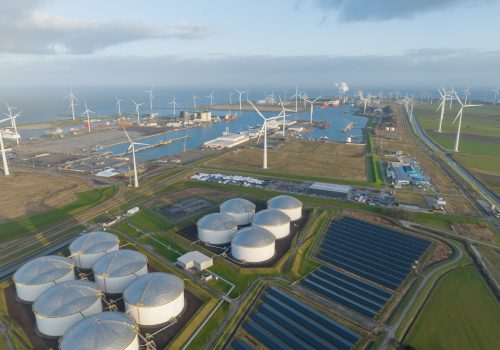
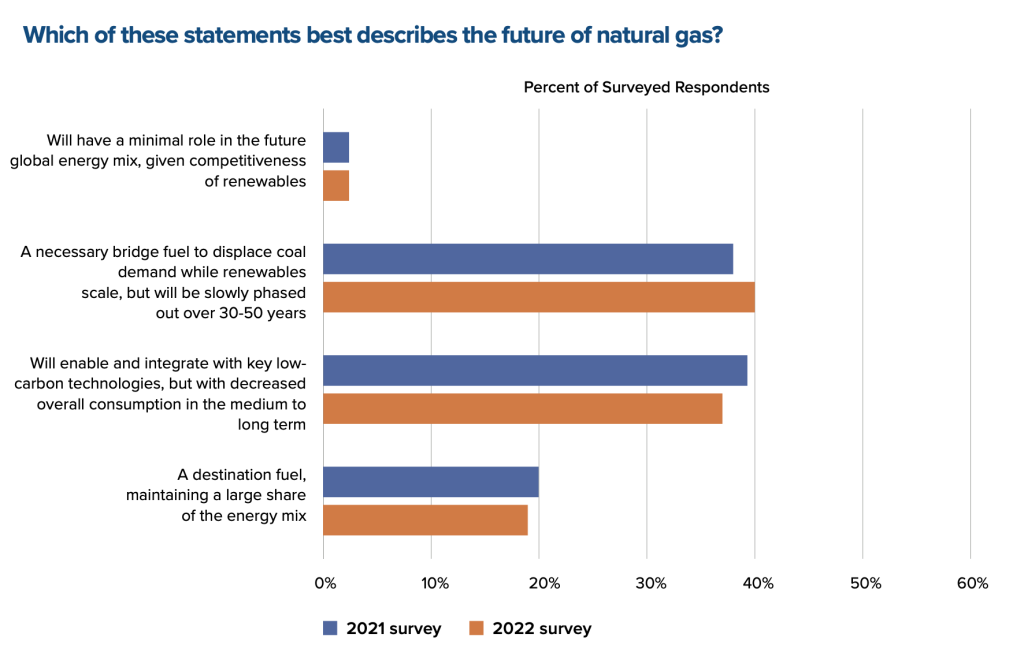
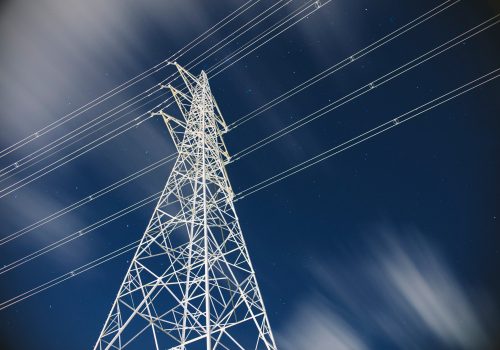



Follow the conversation on social media using #GlobalEnergyAgenda